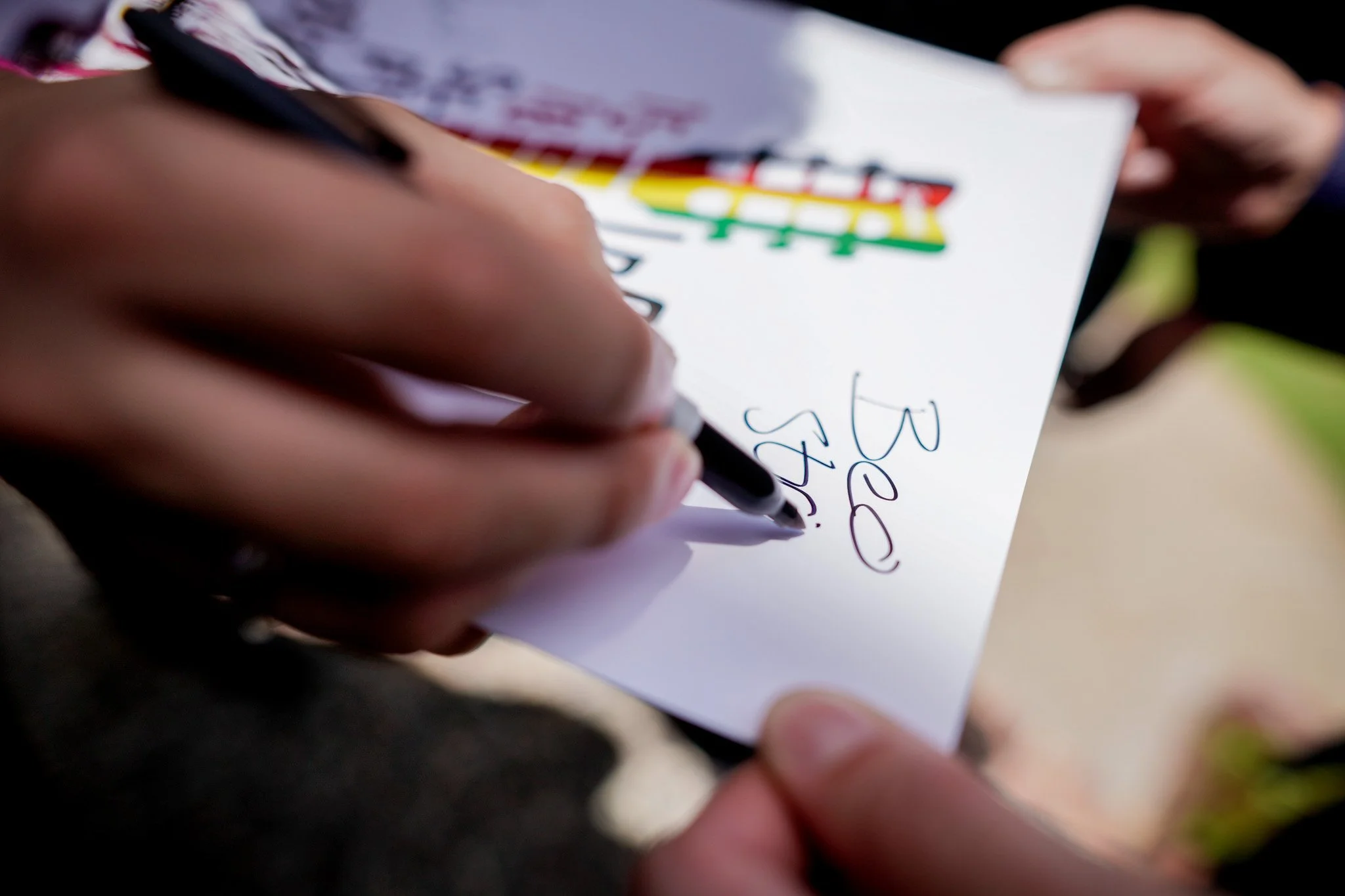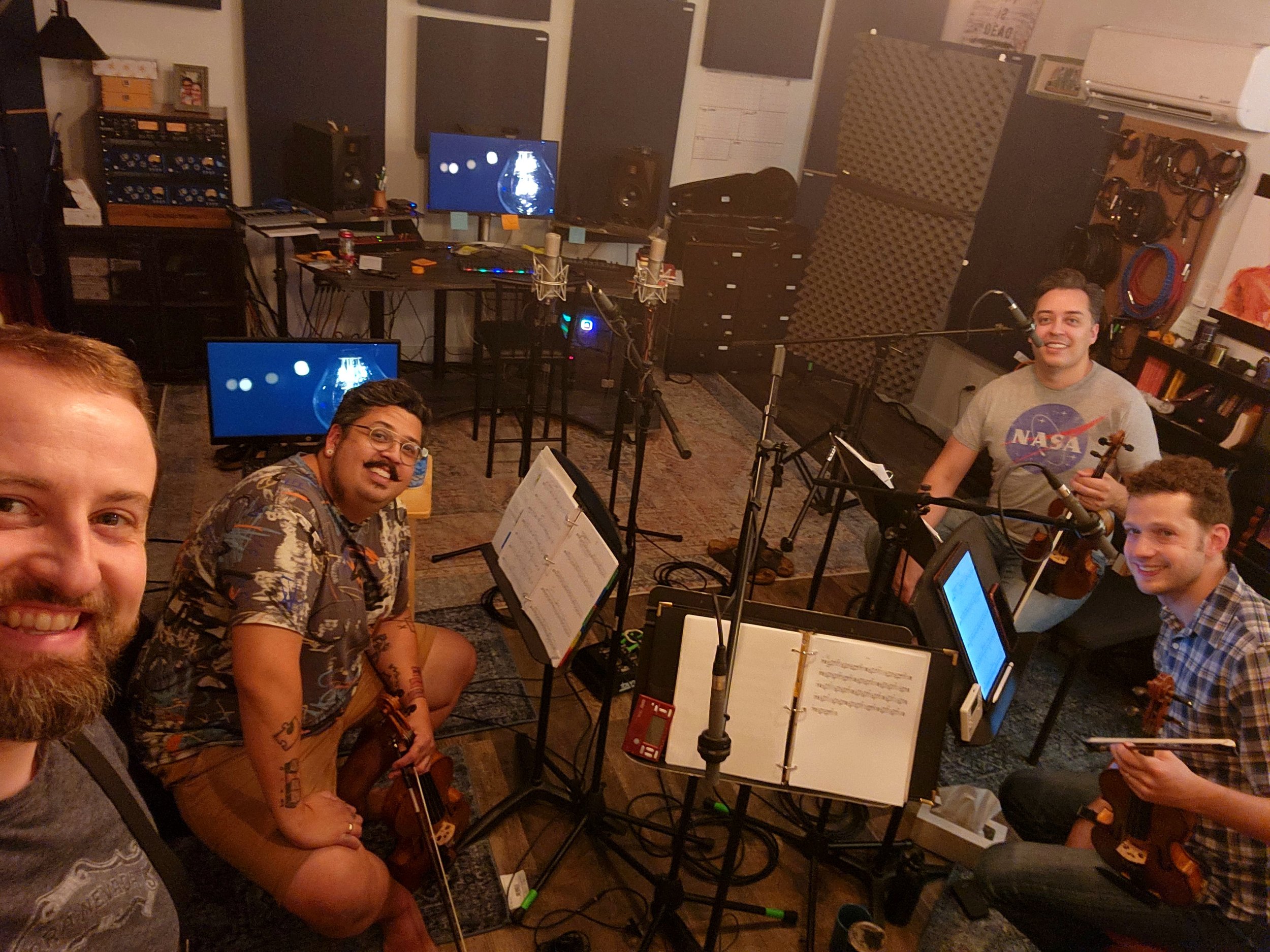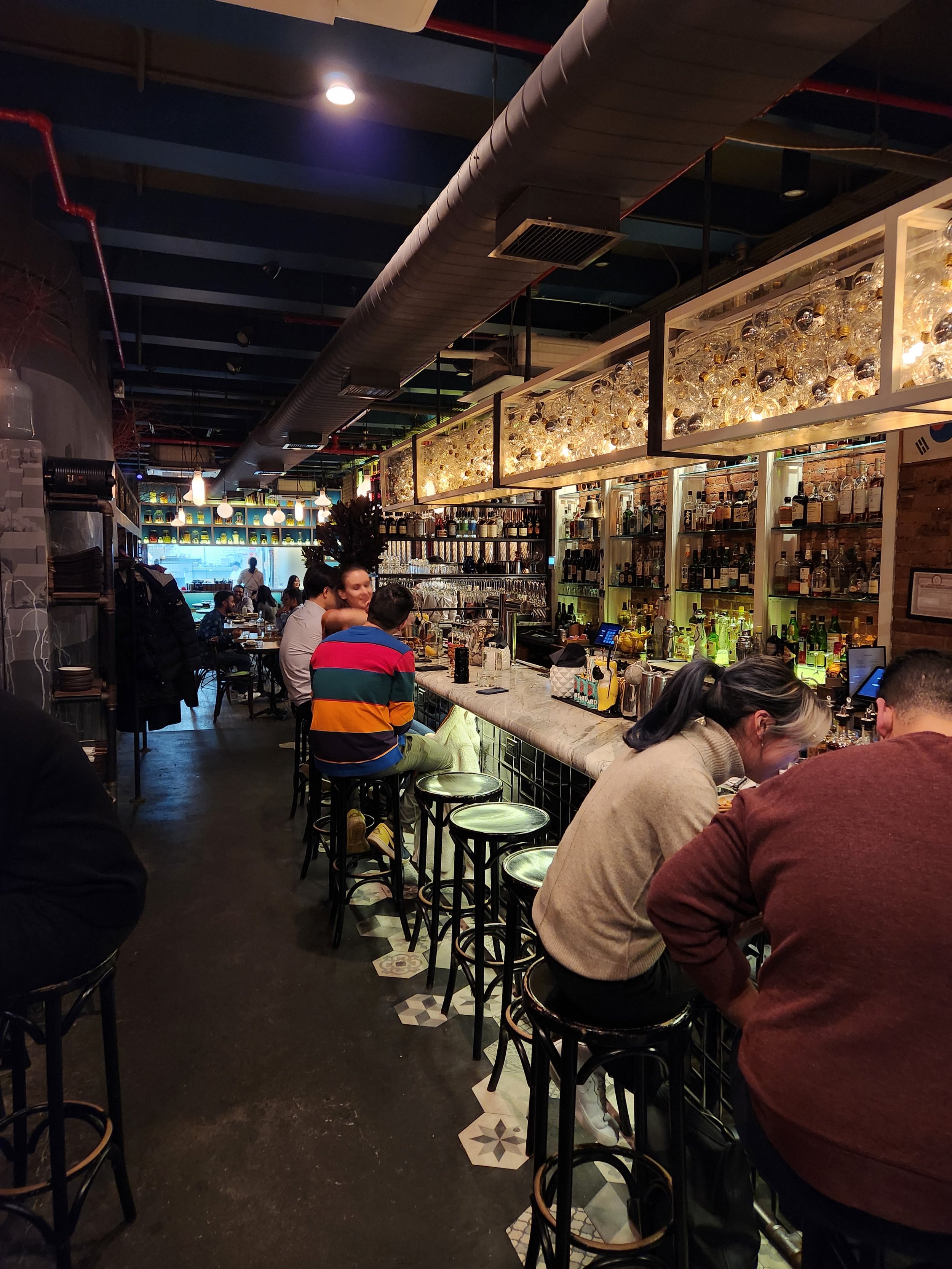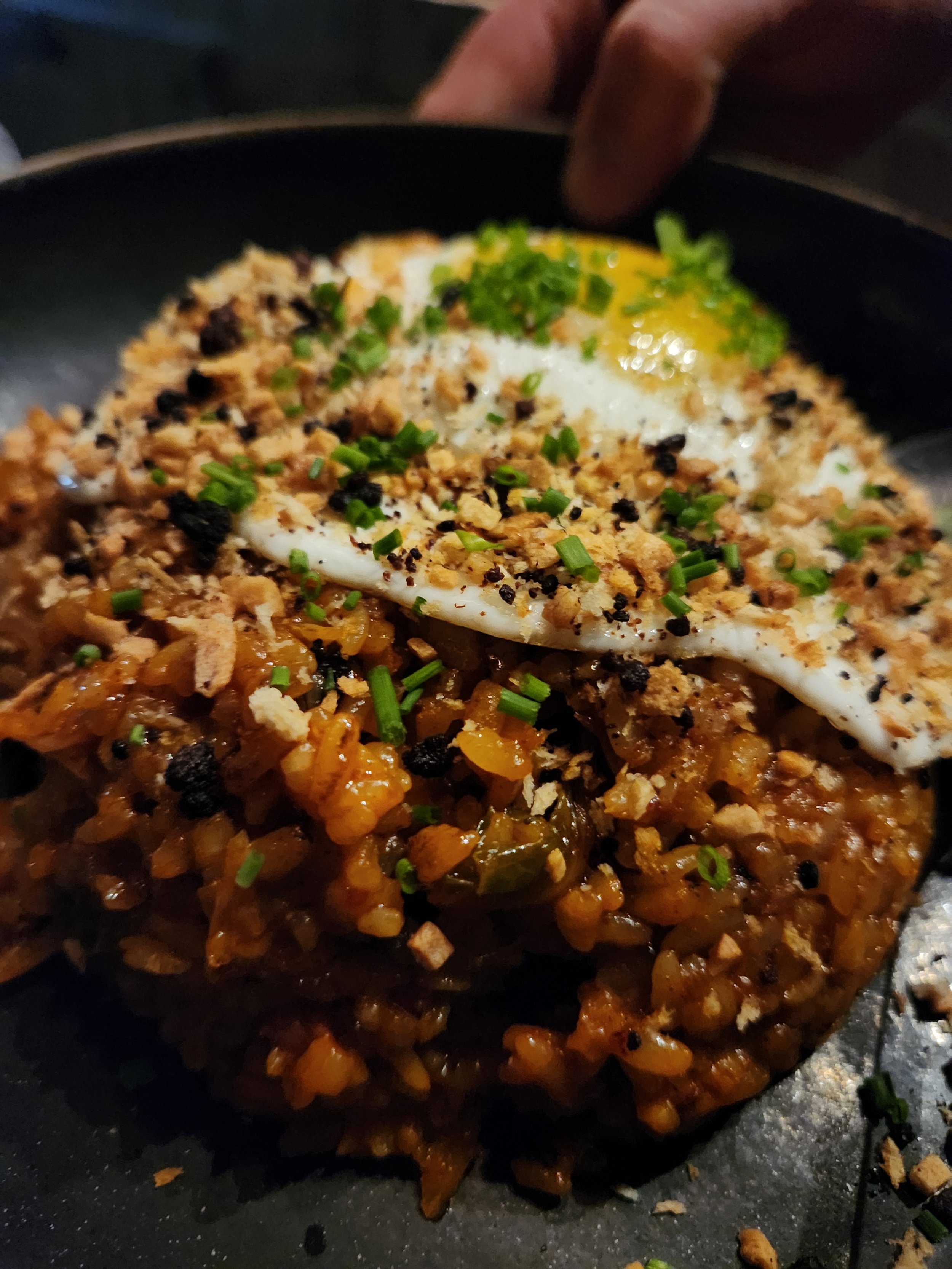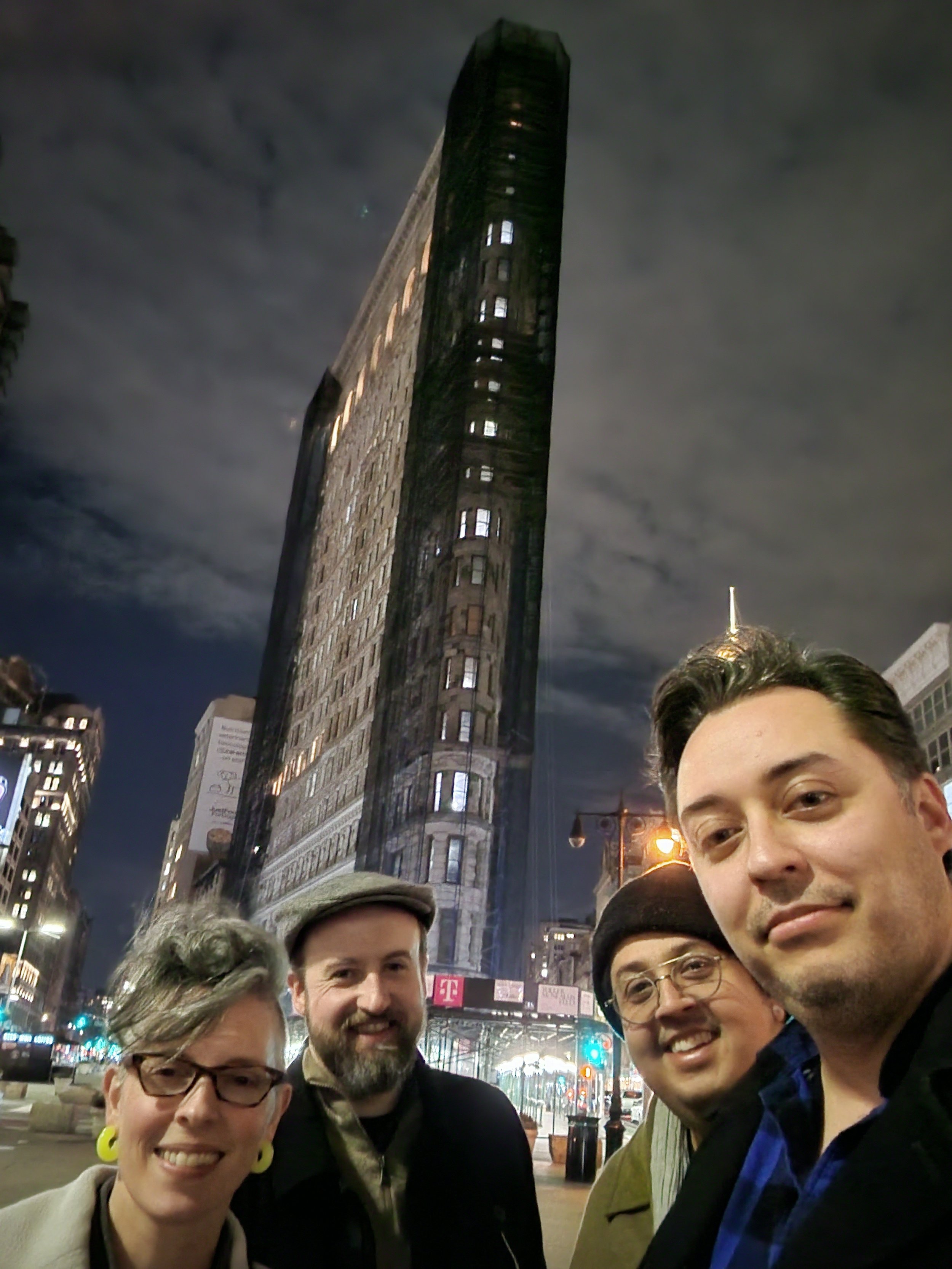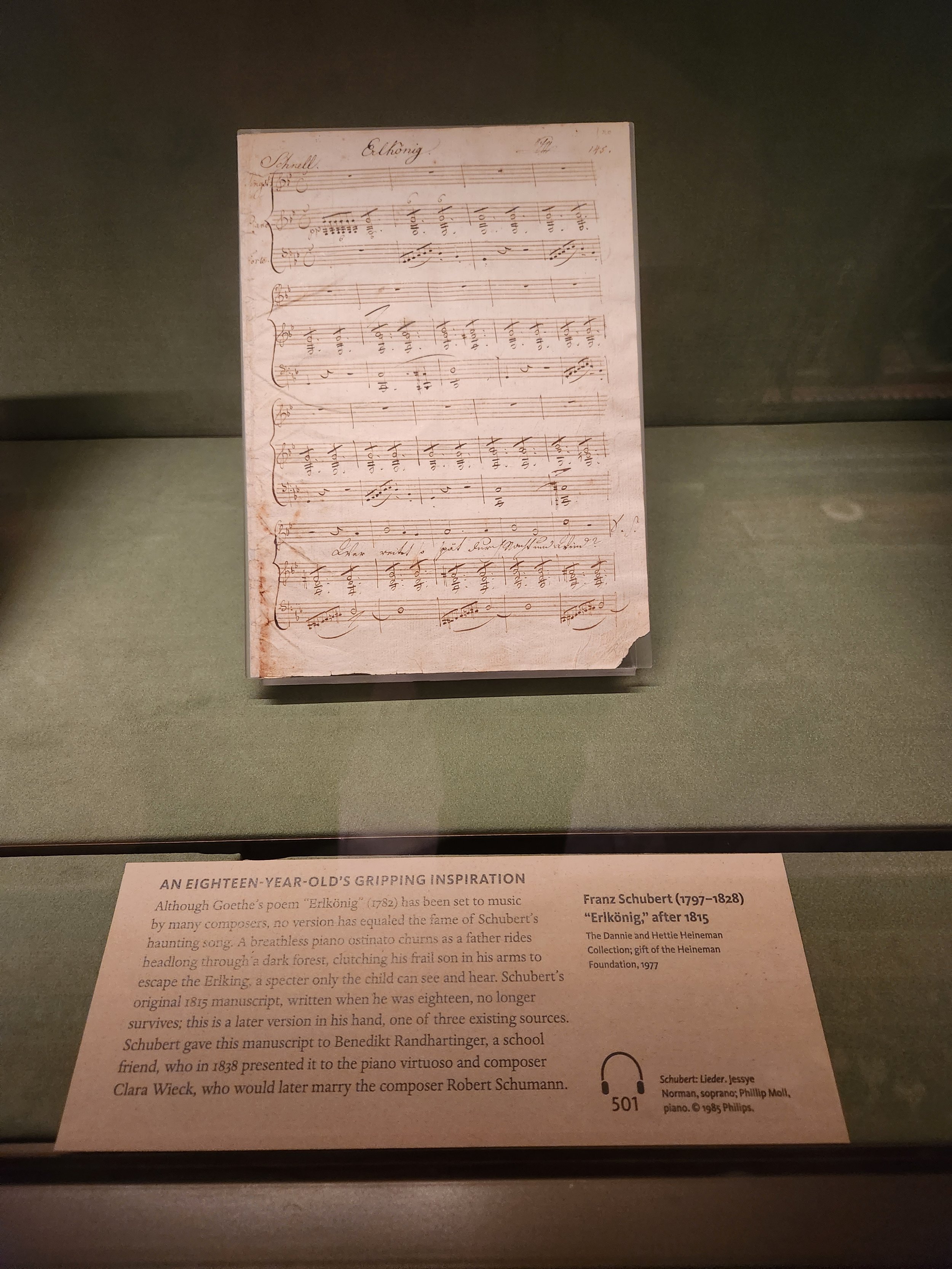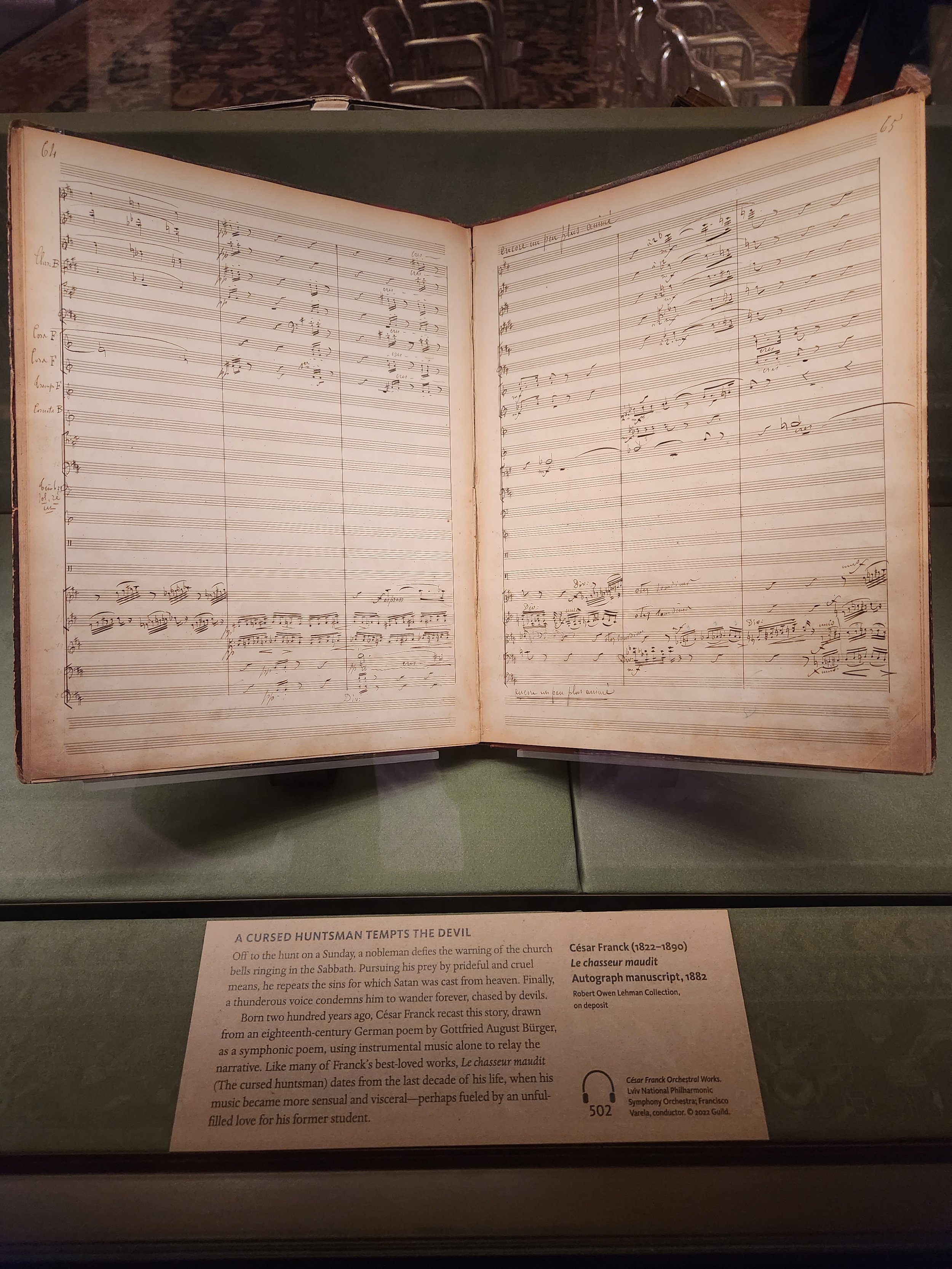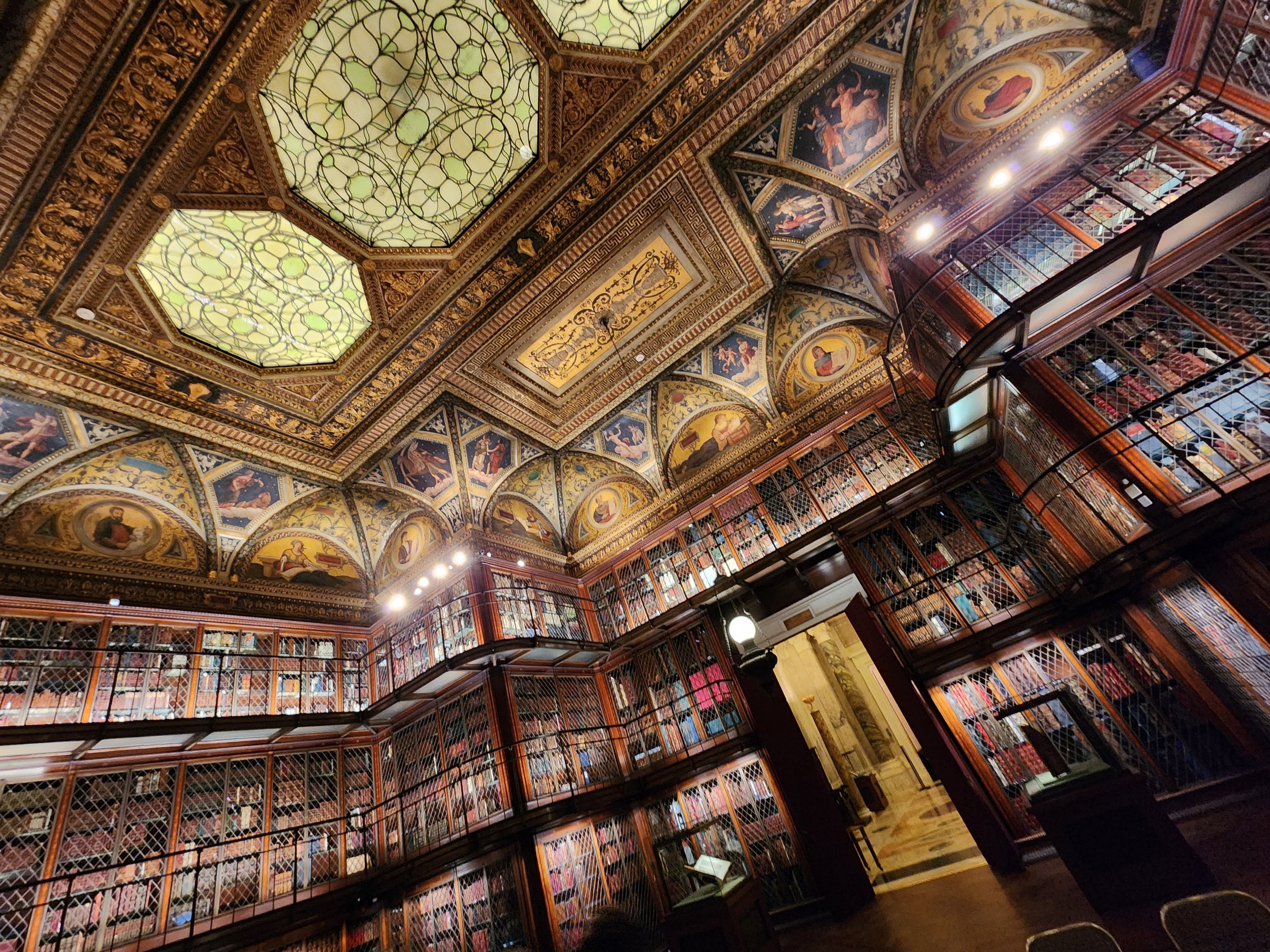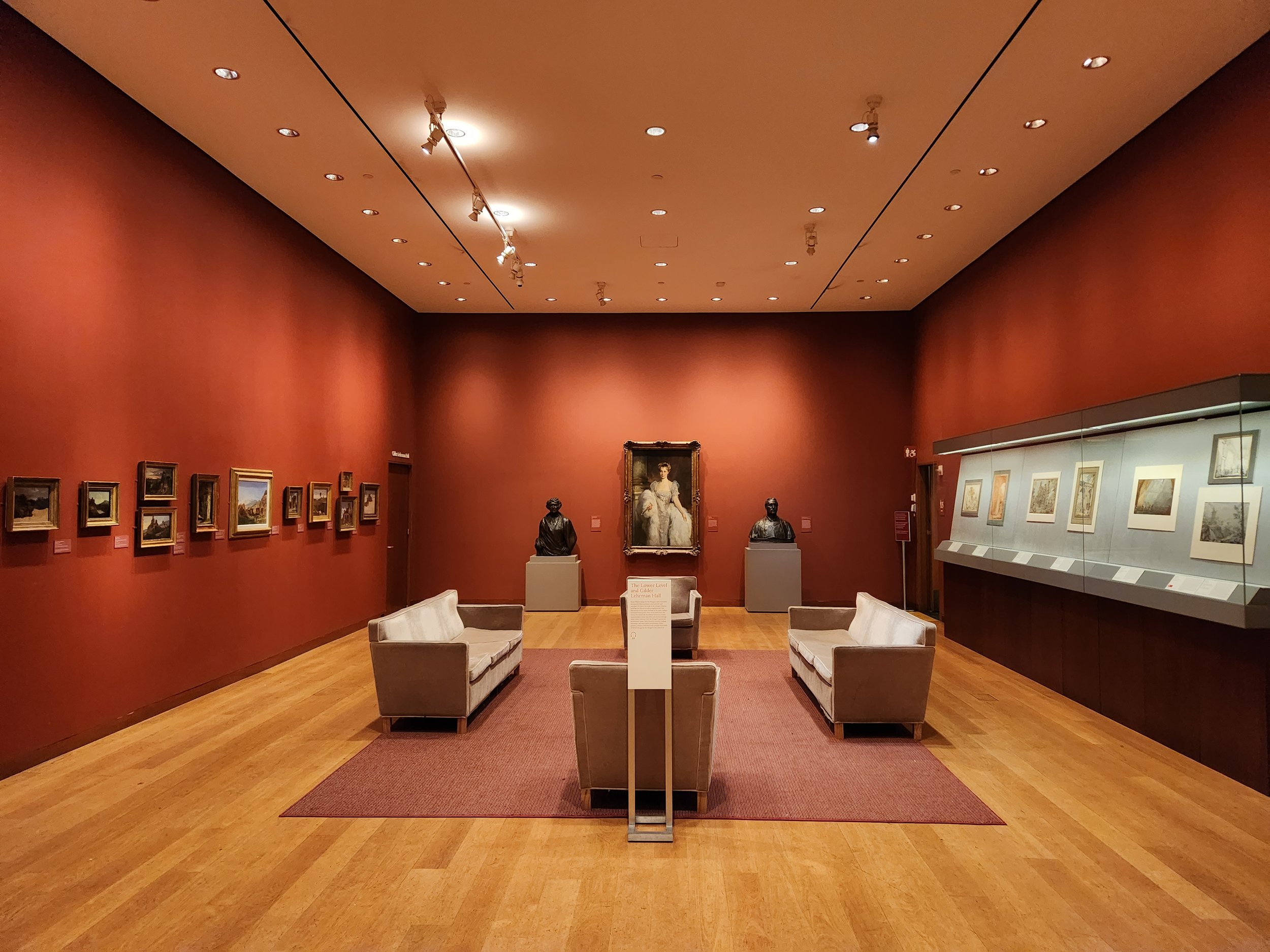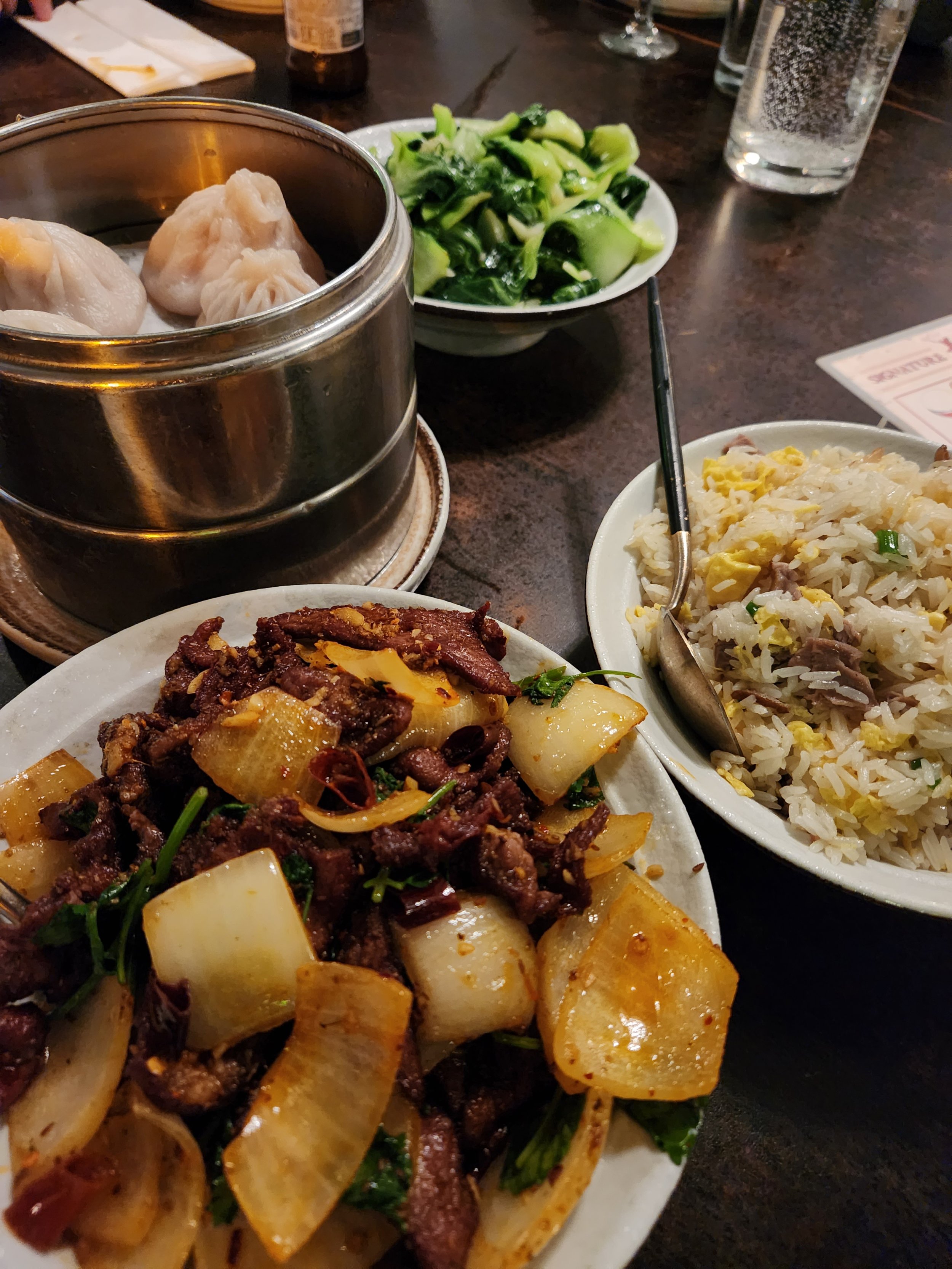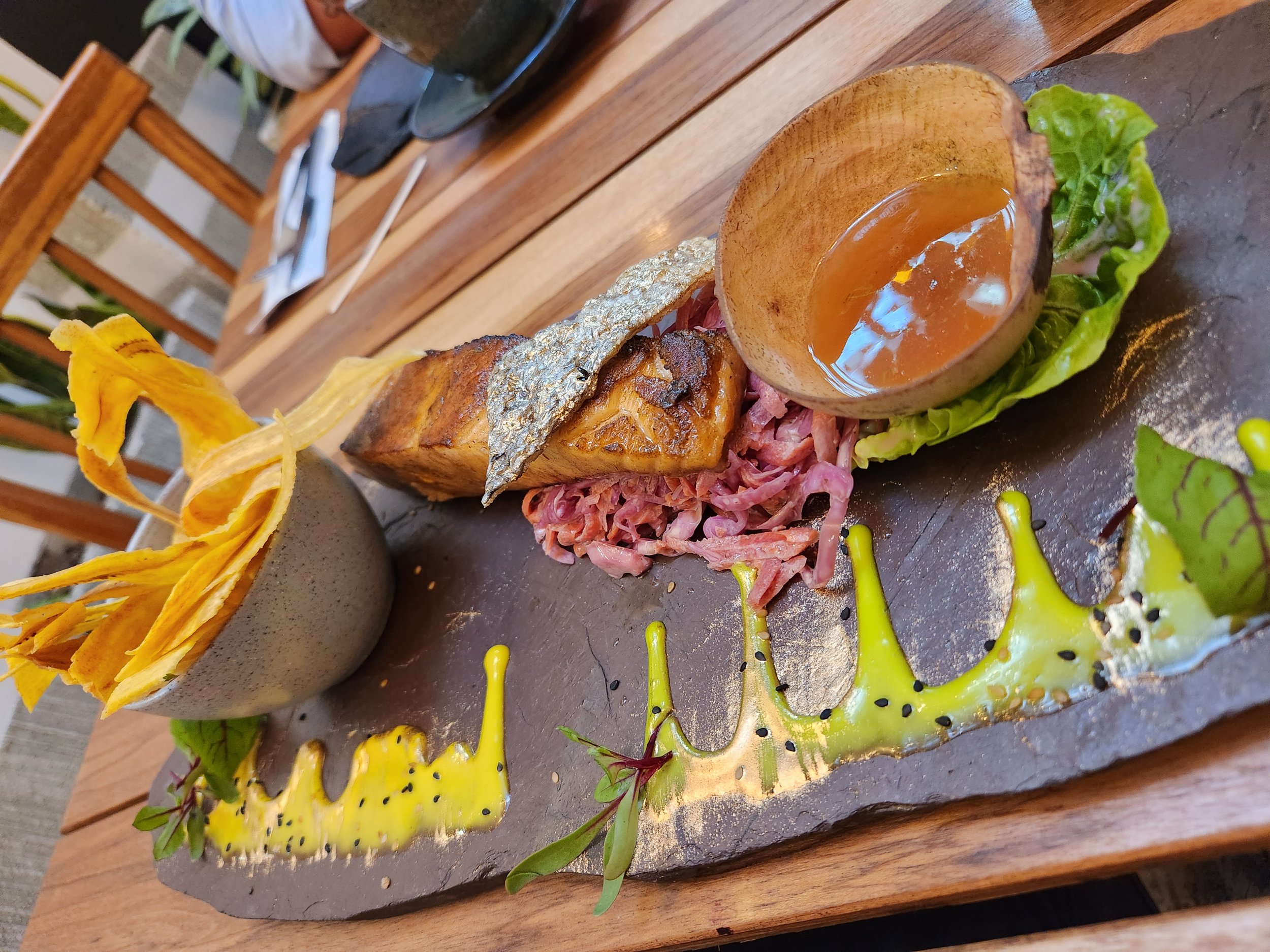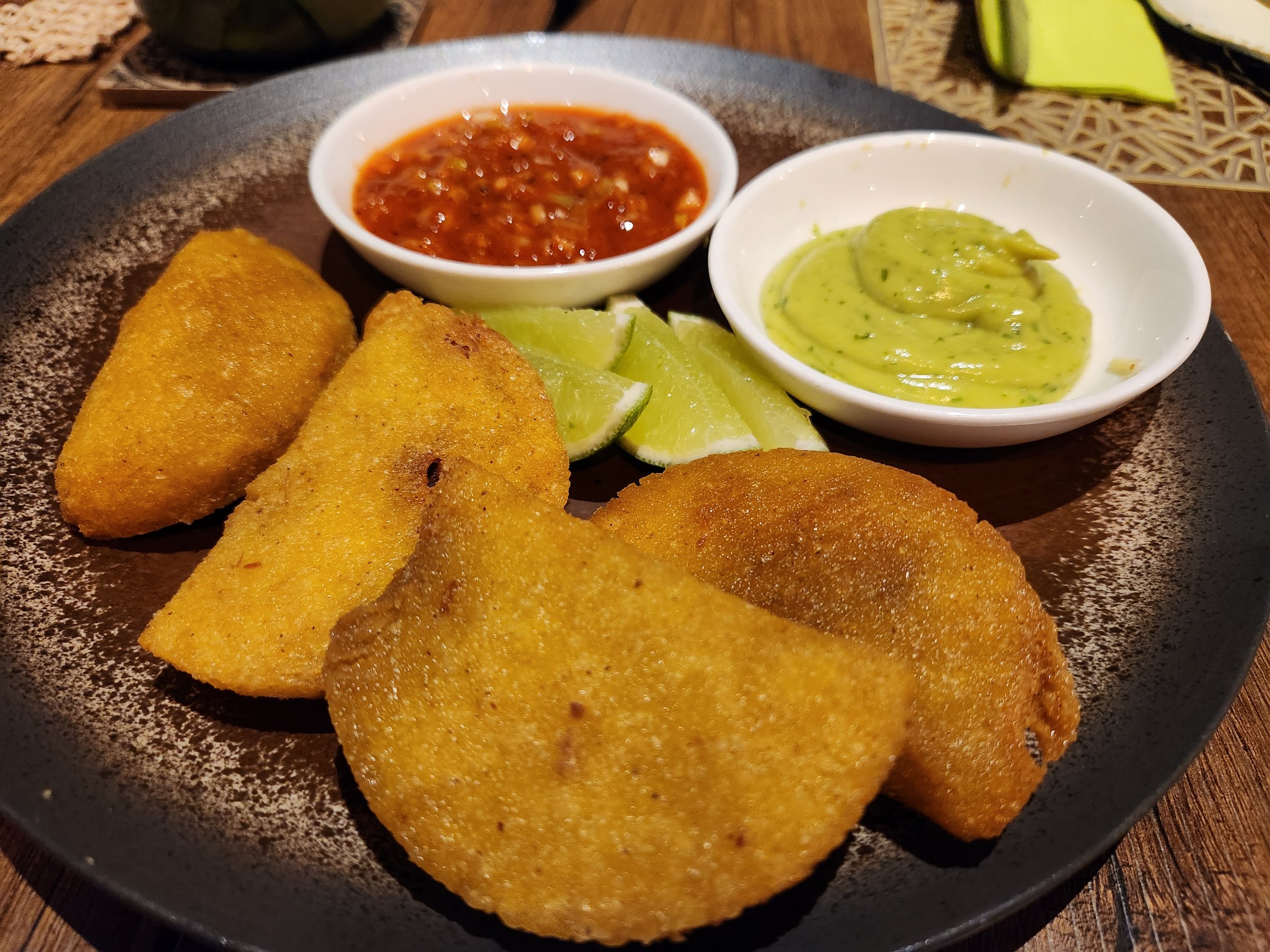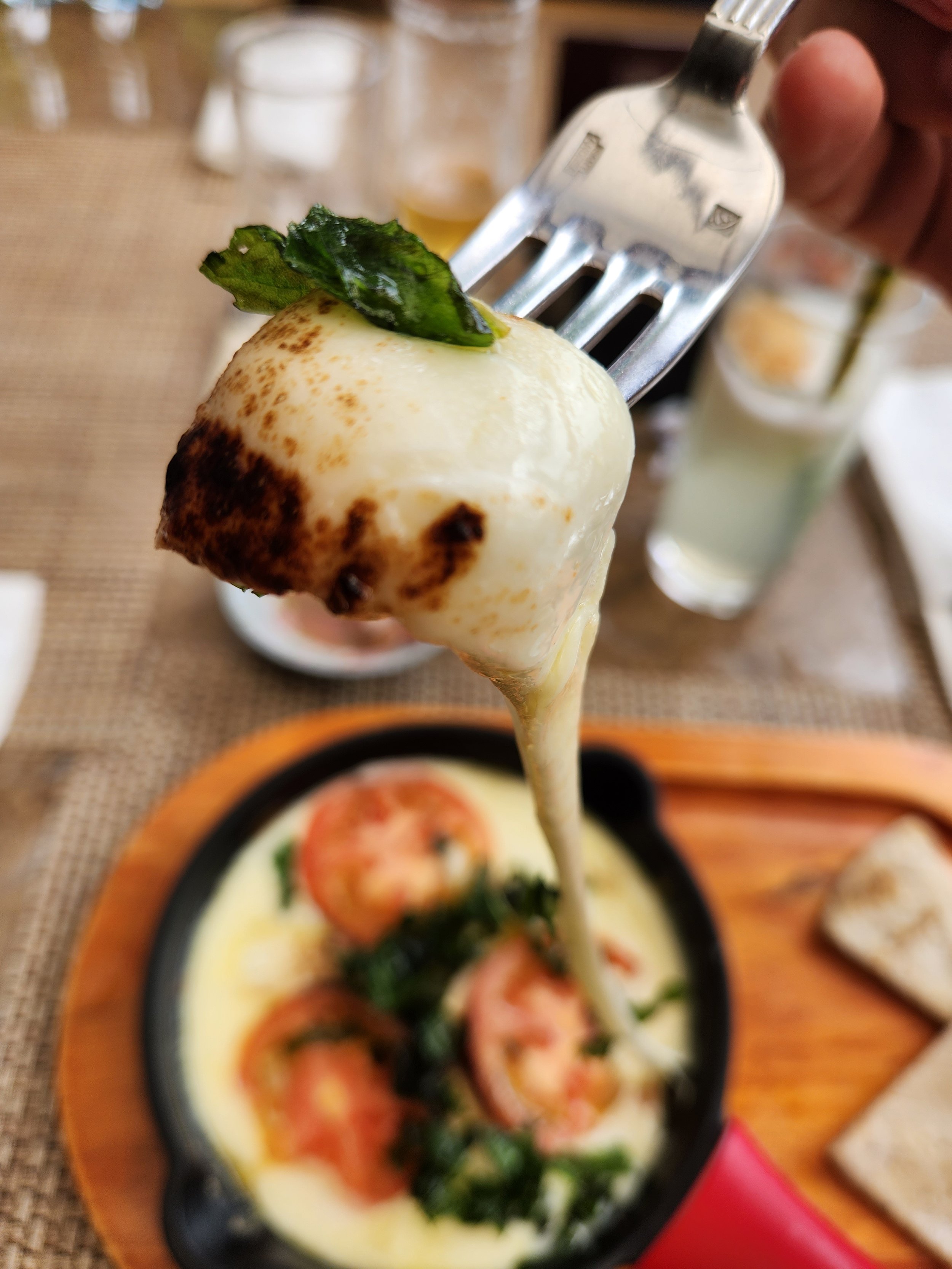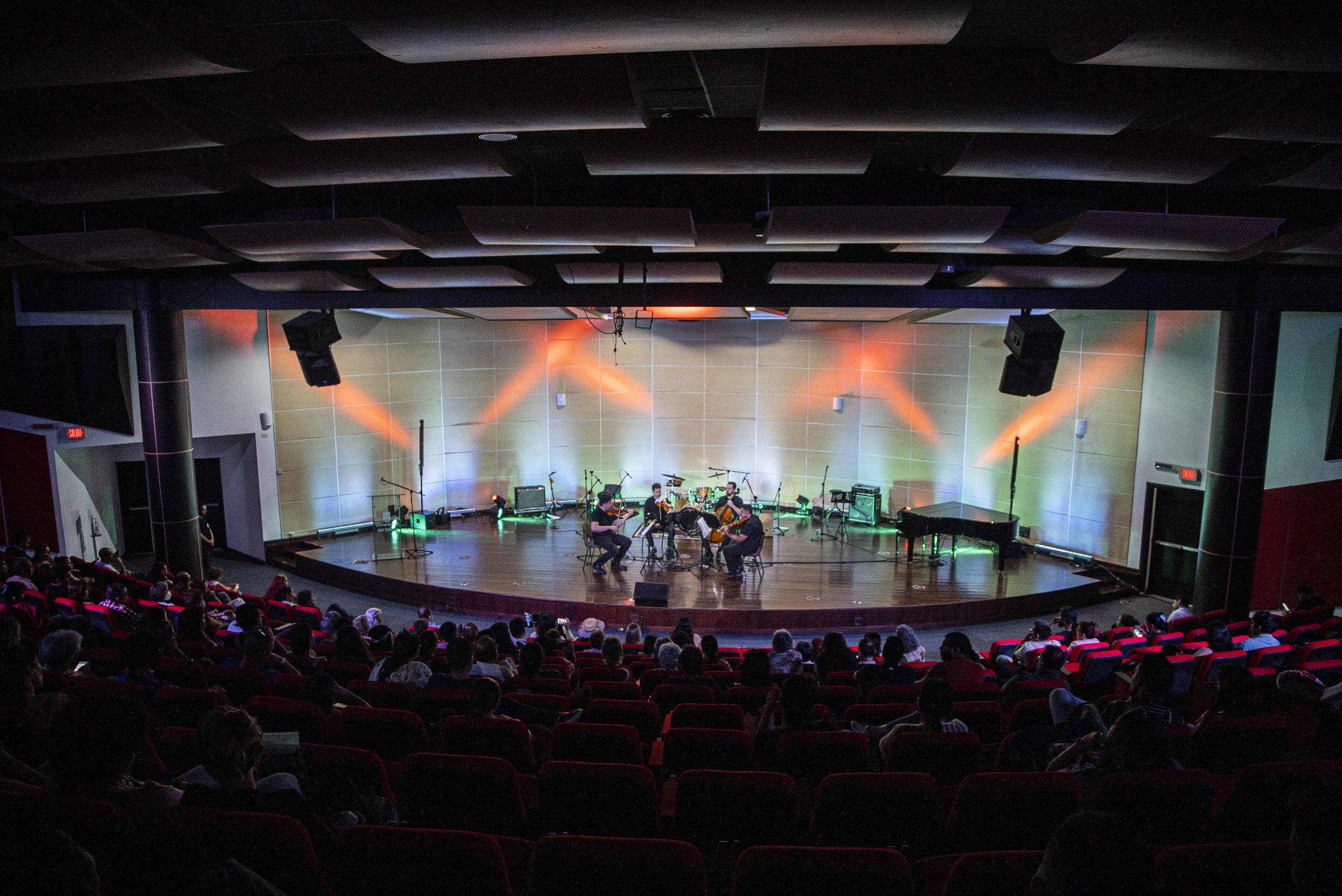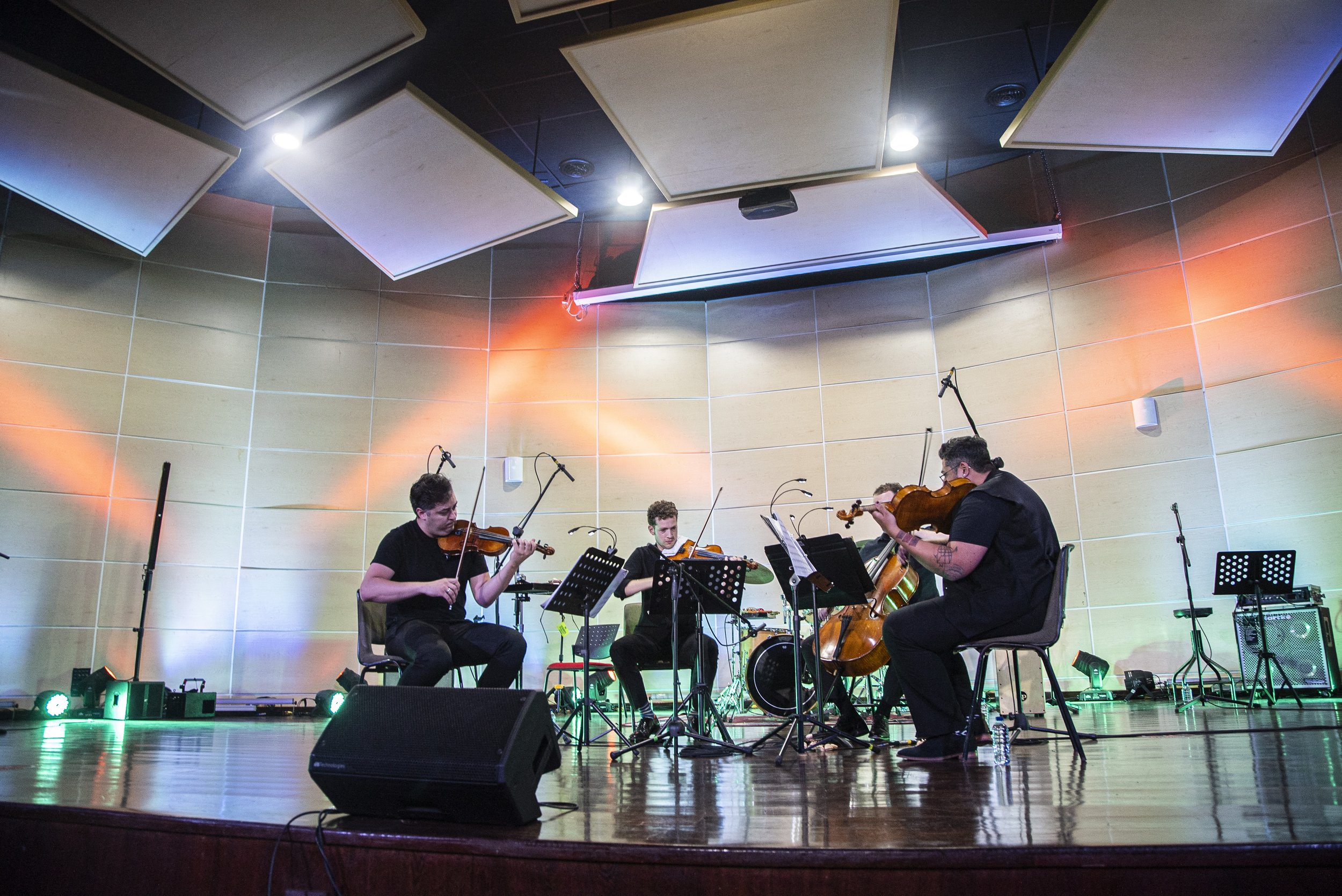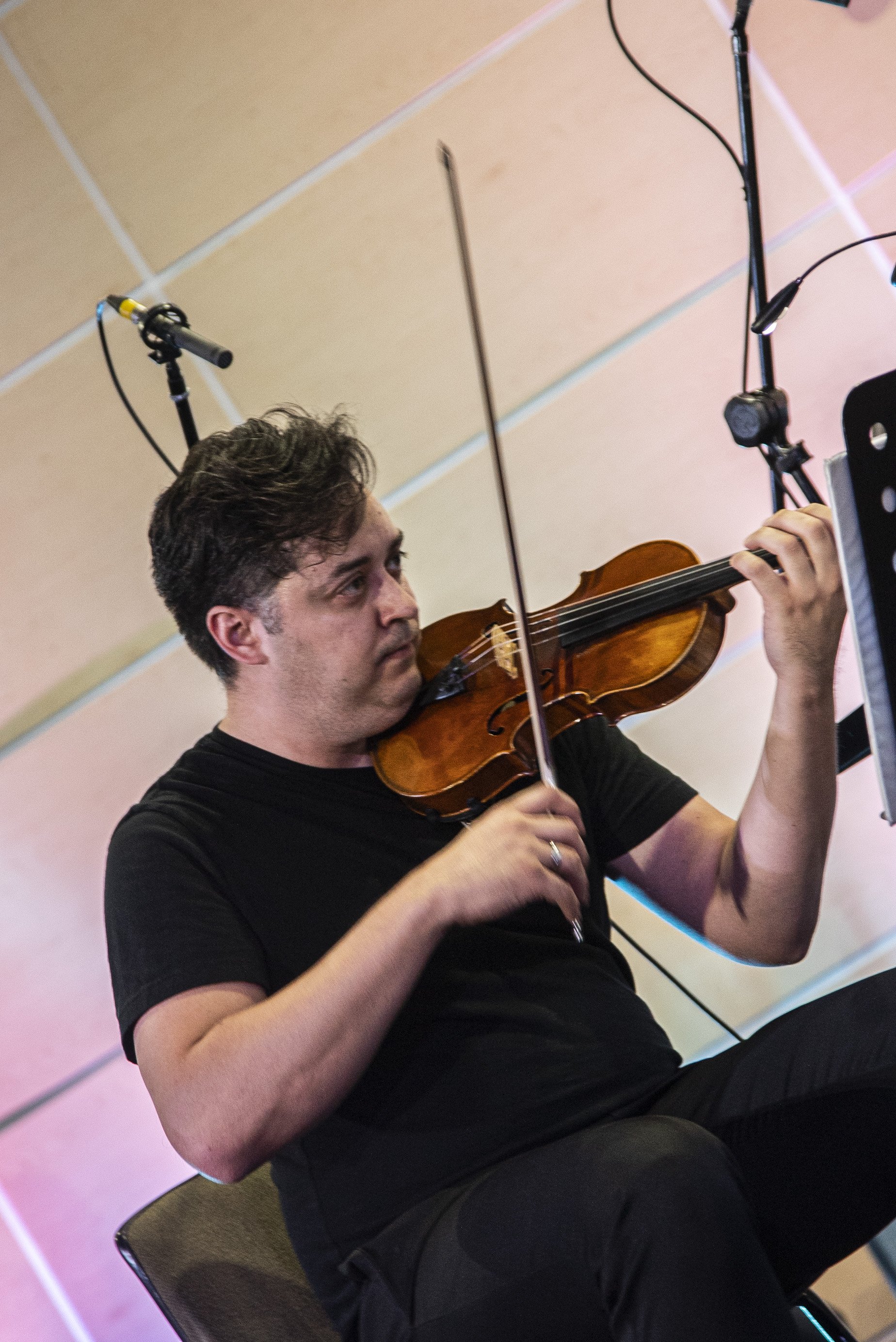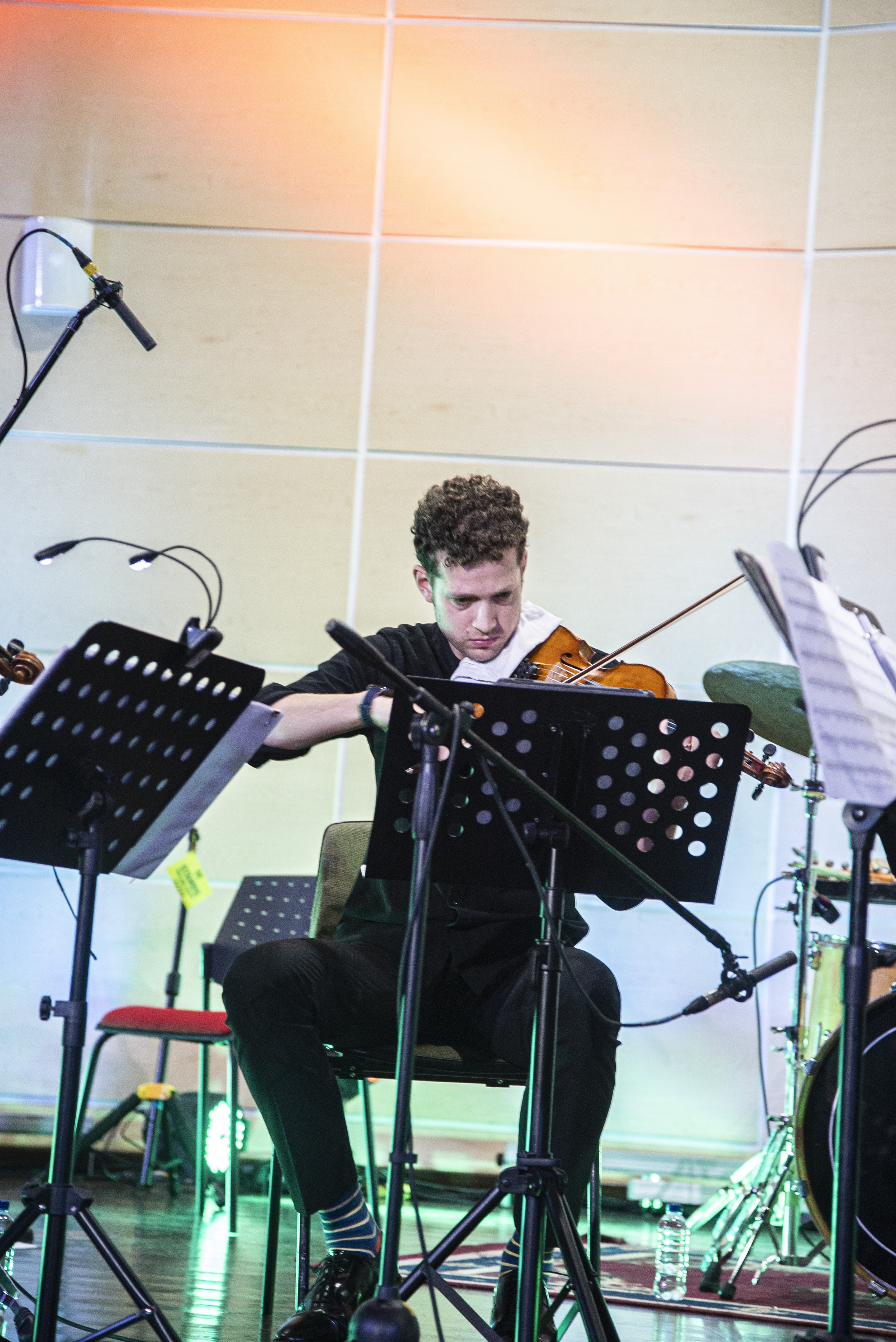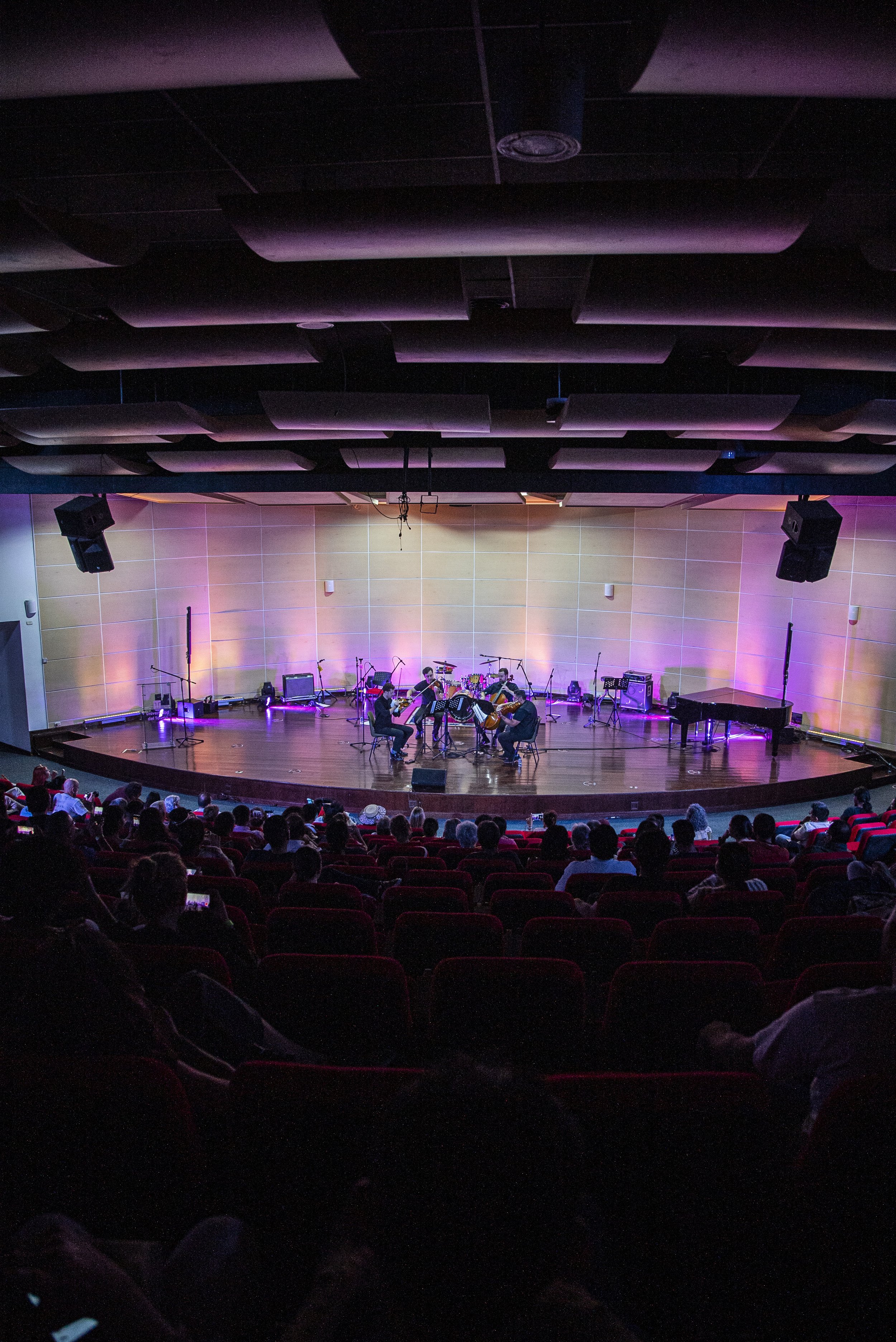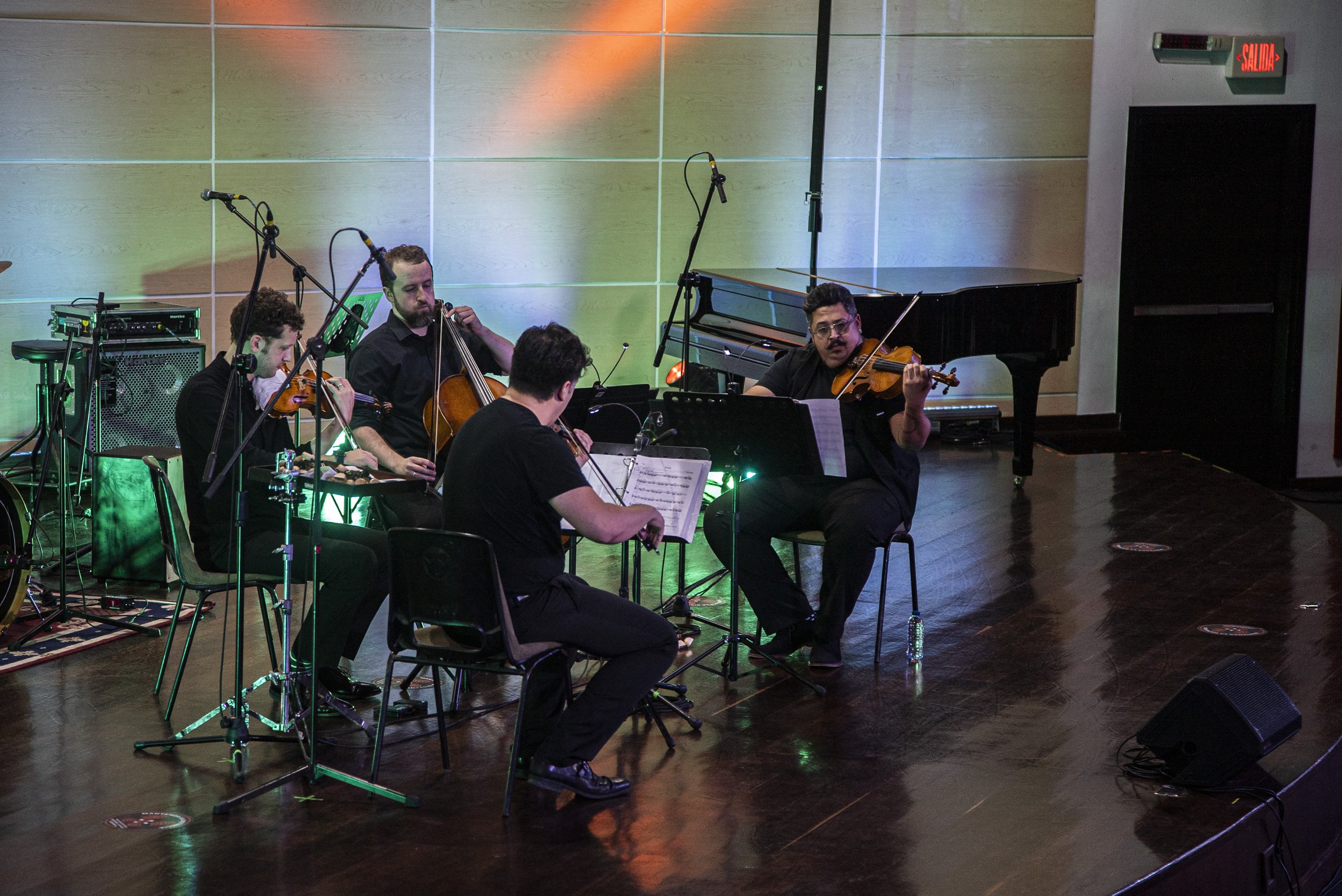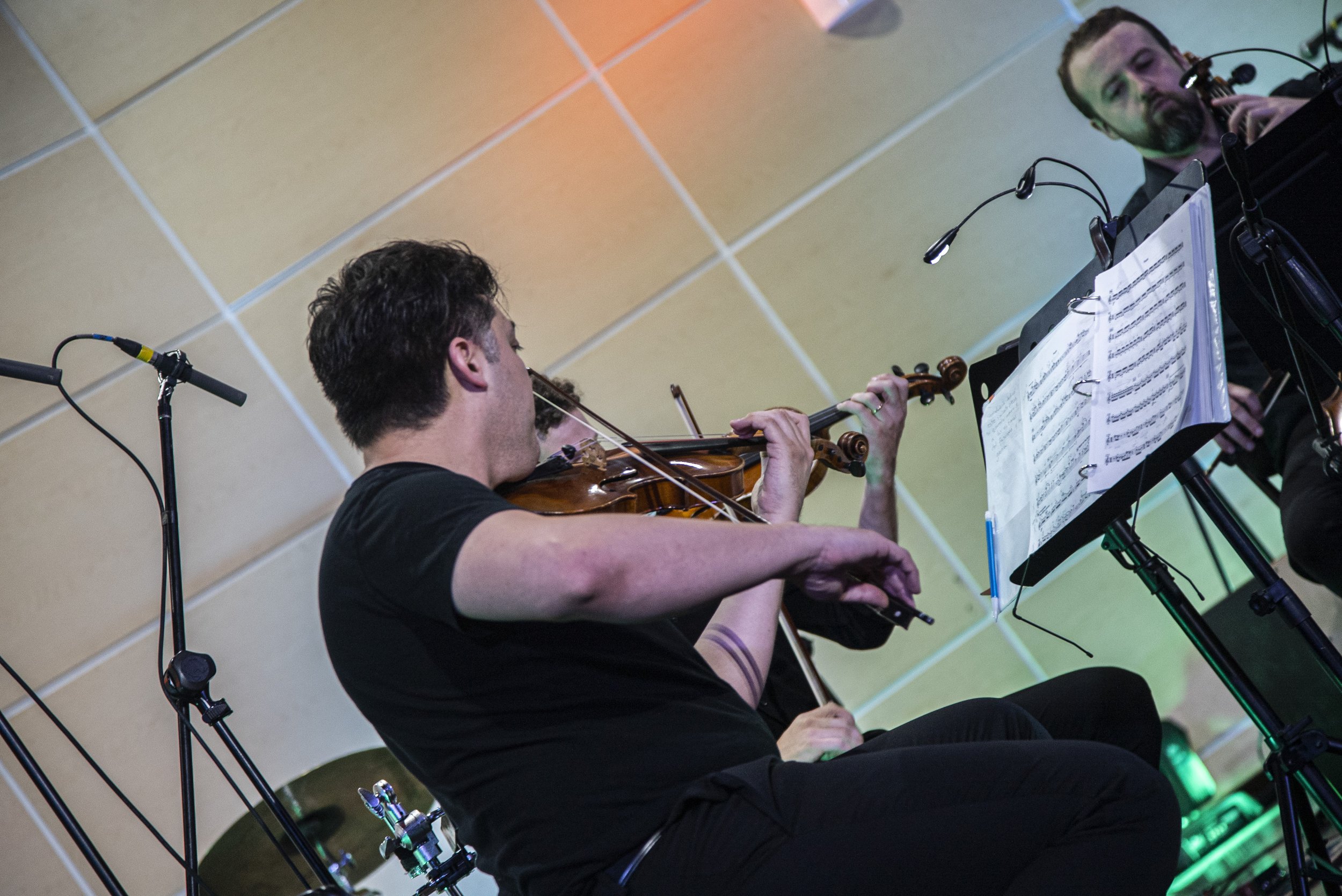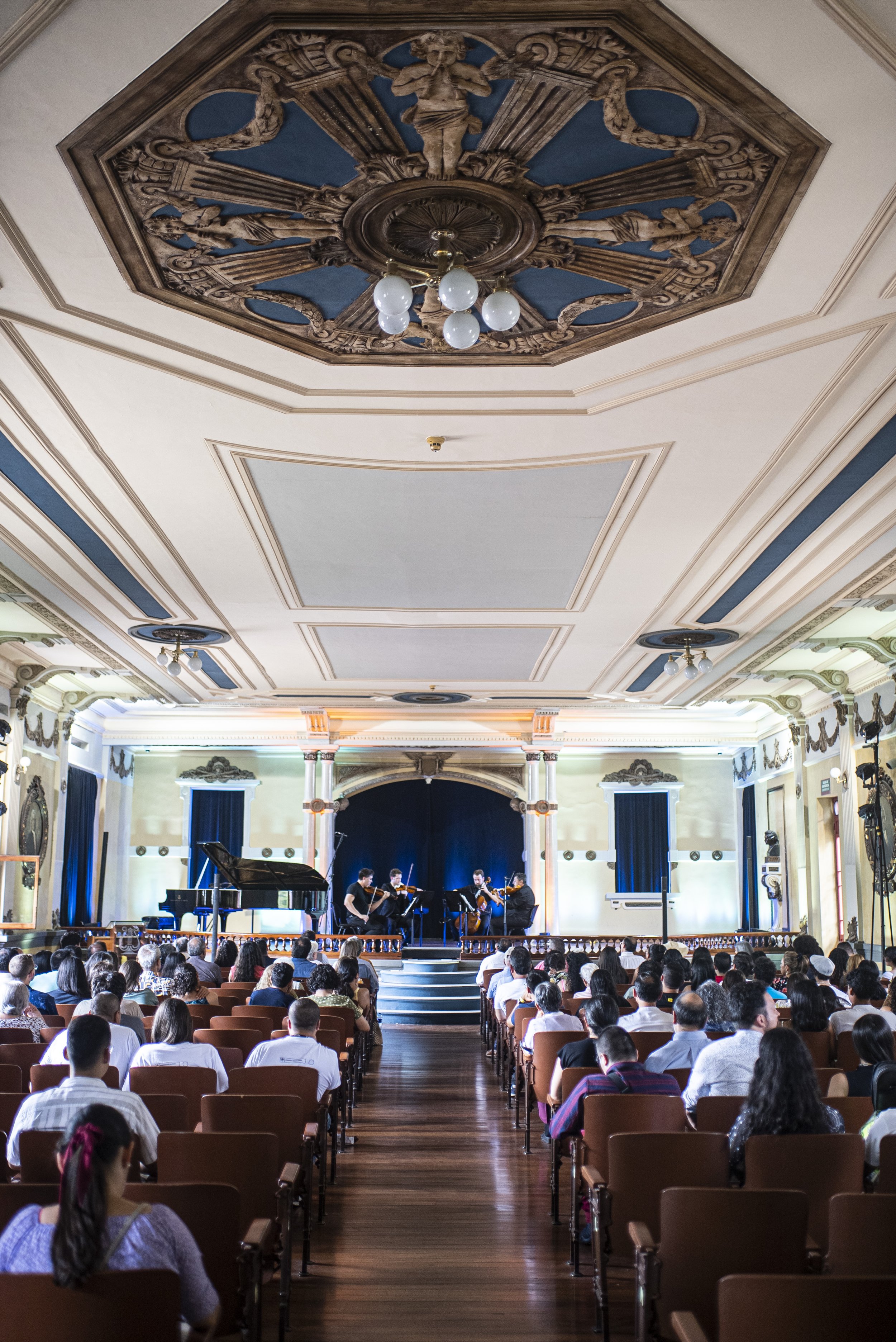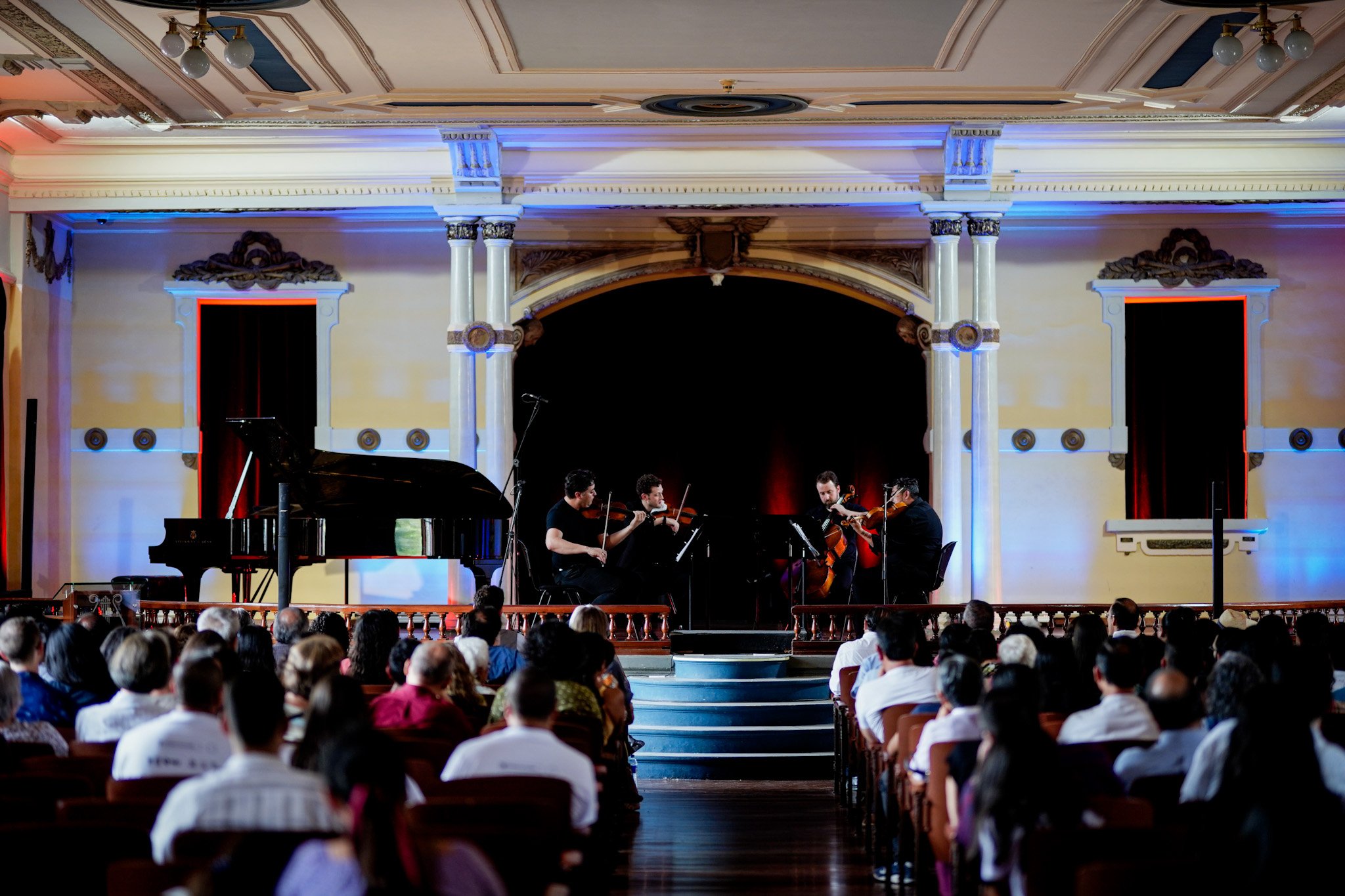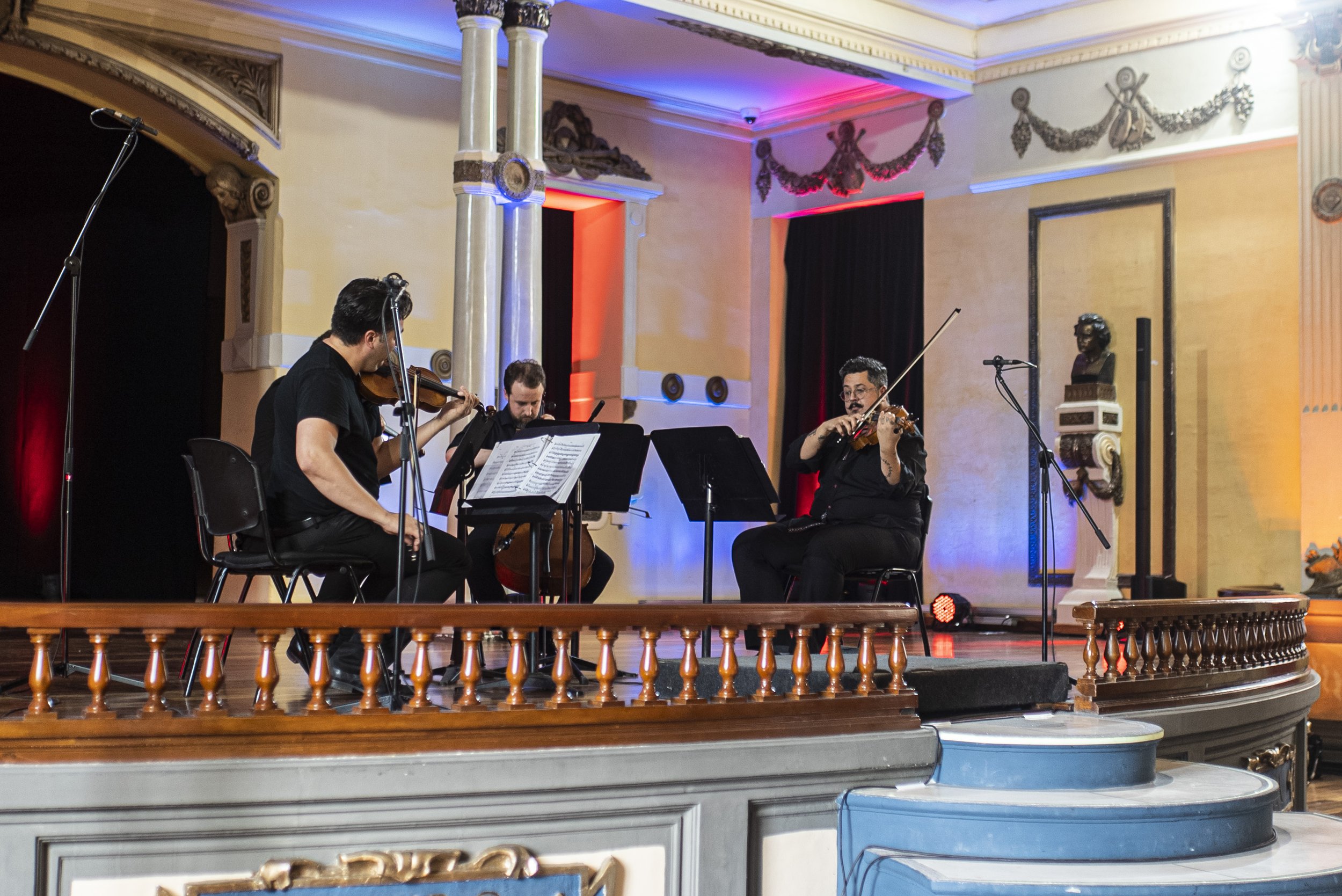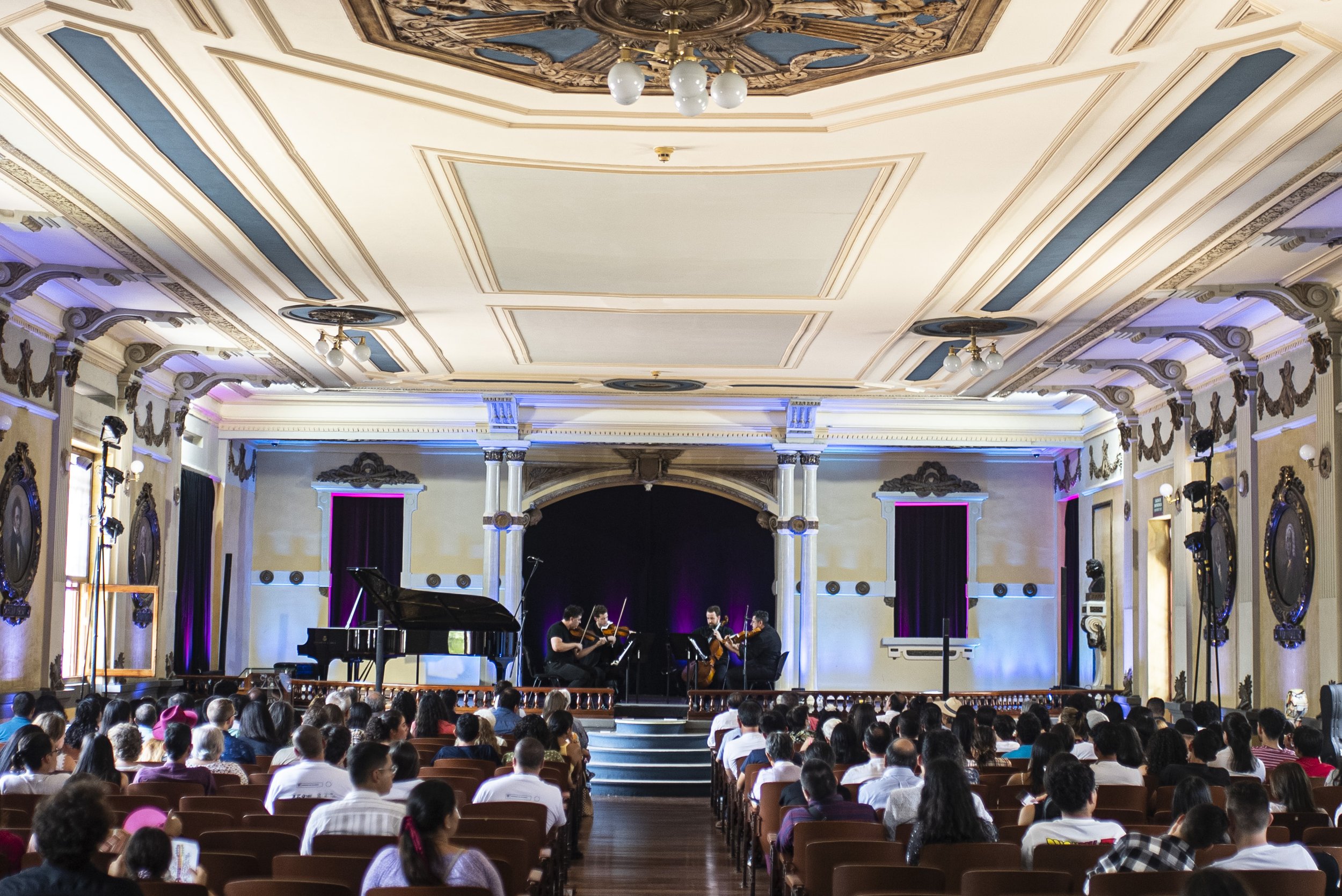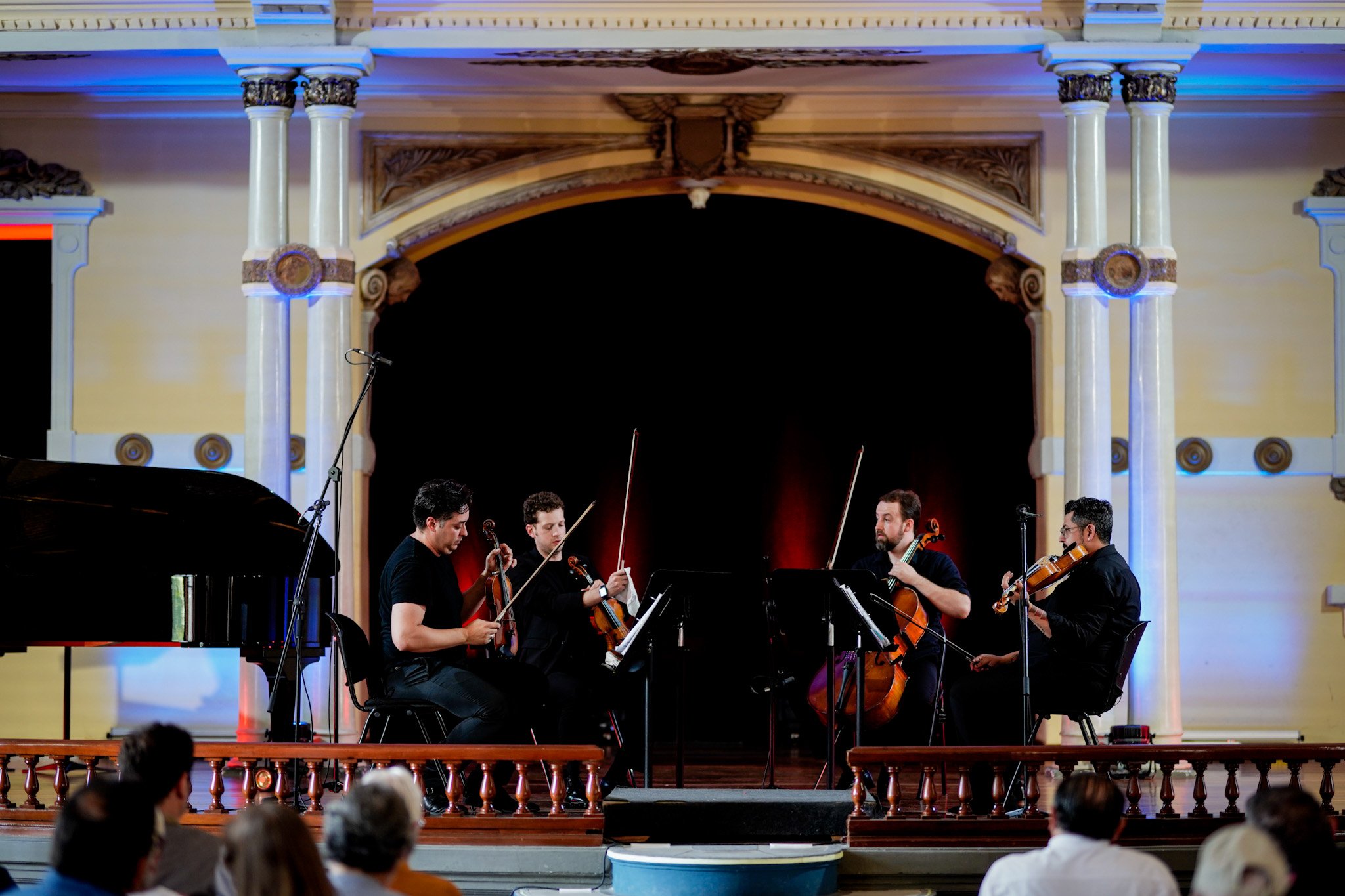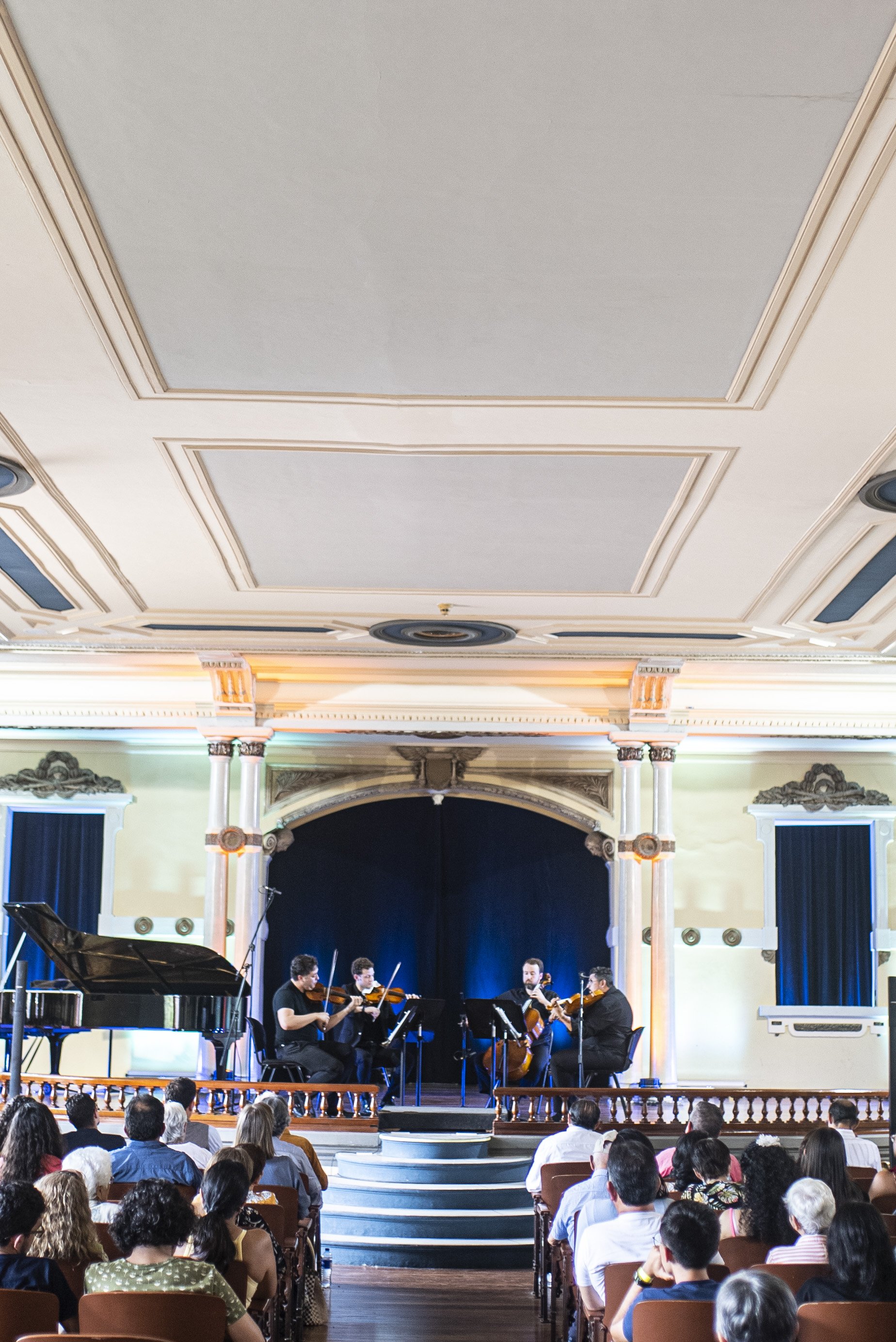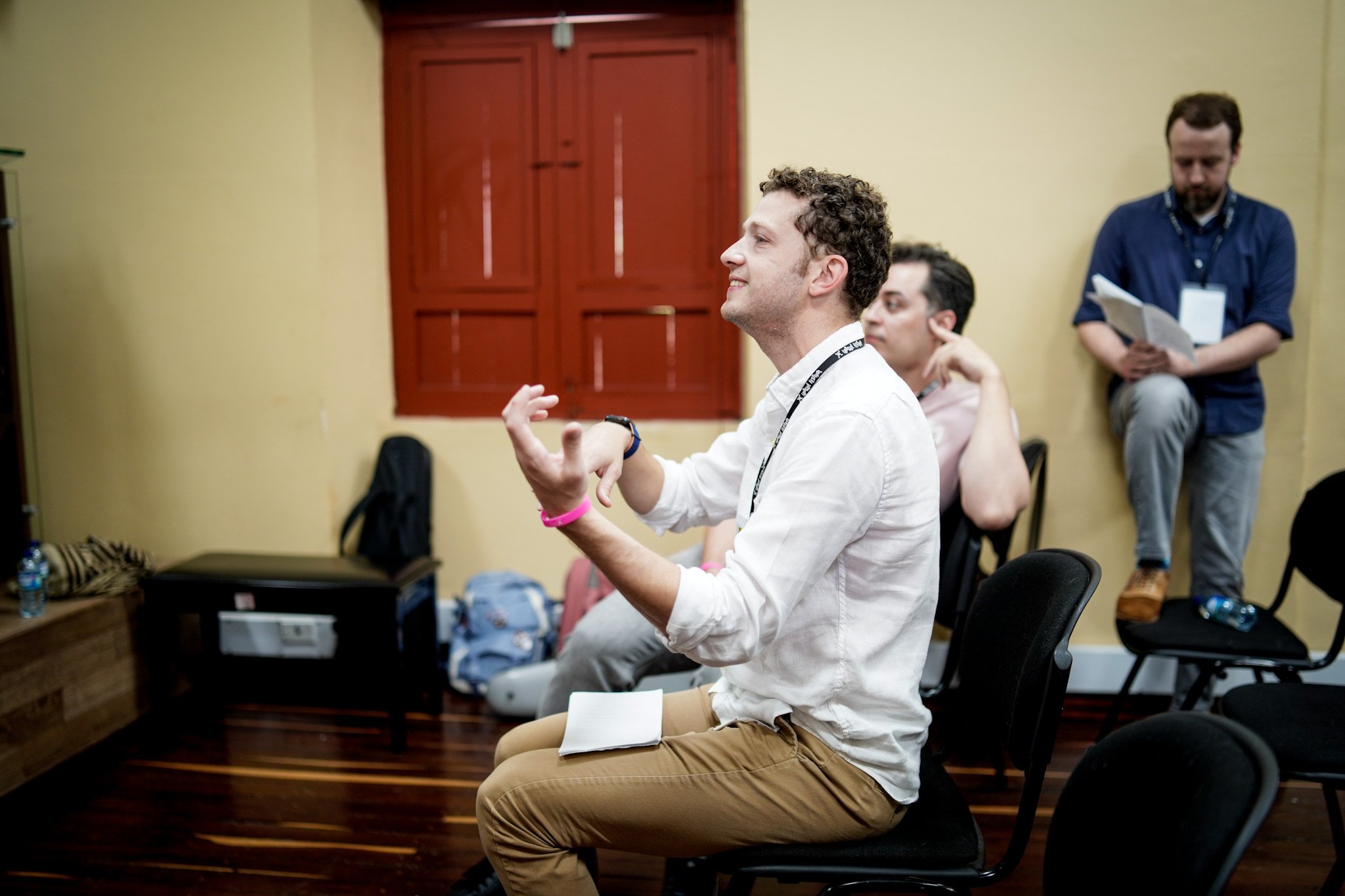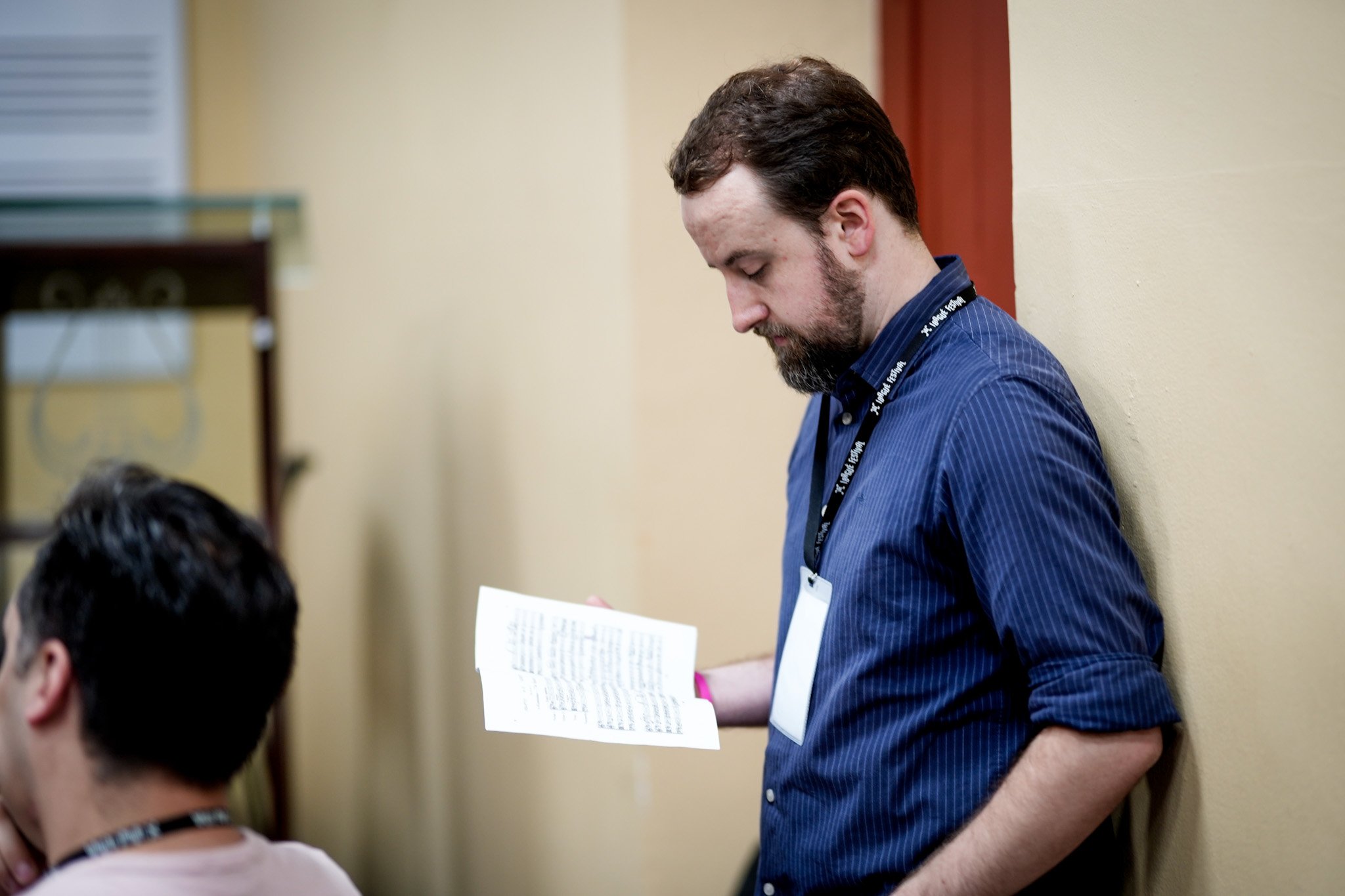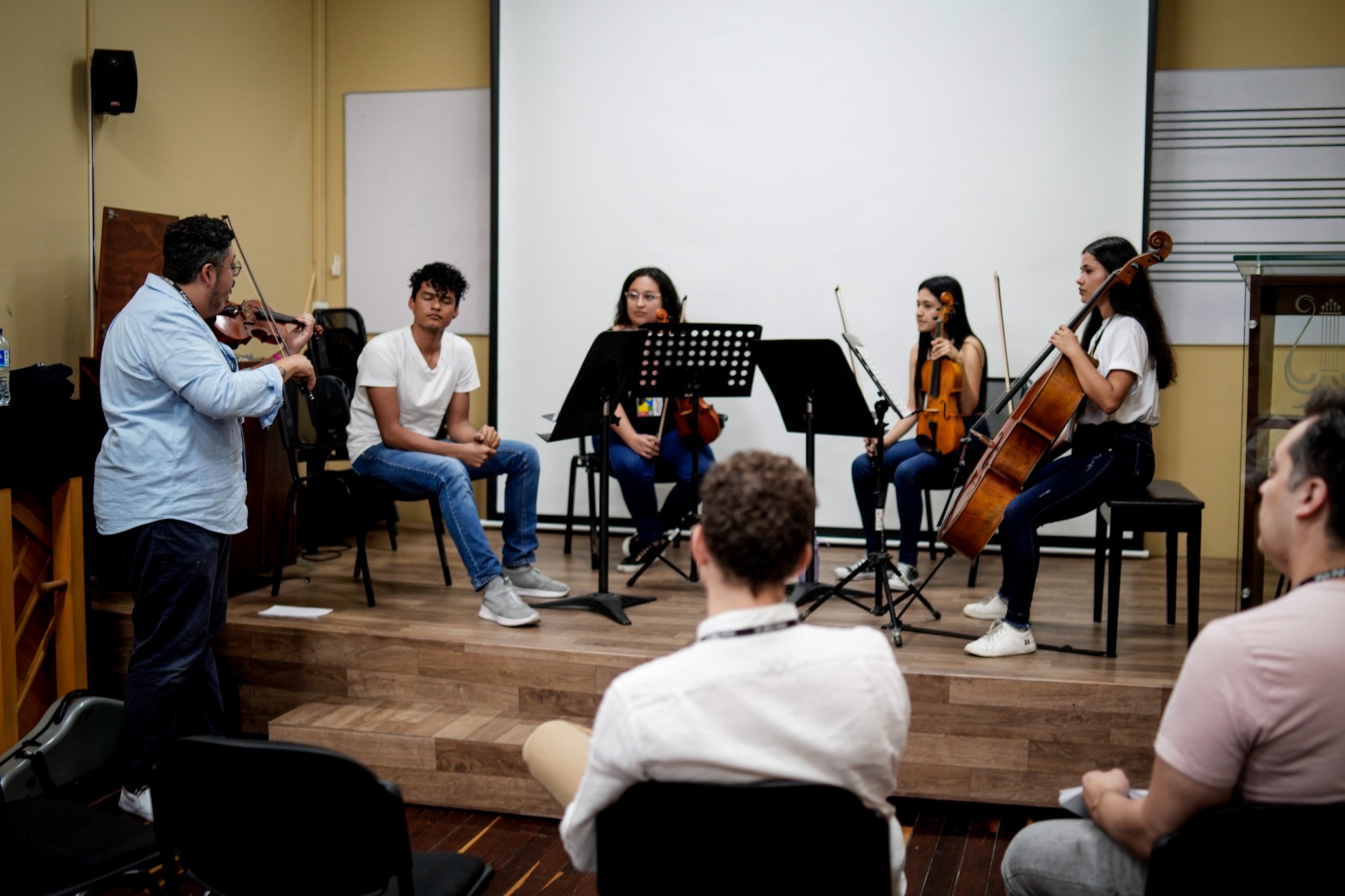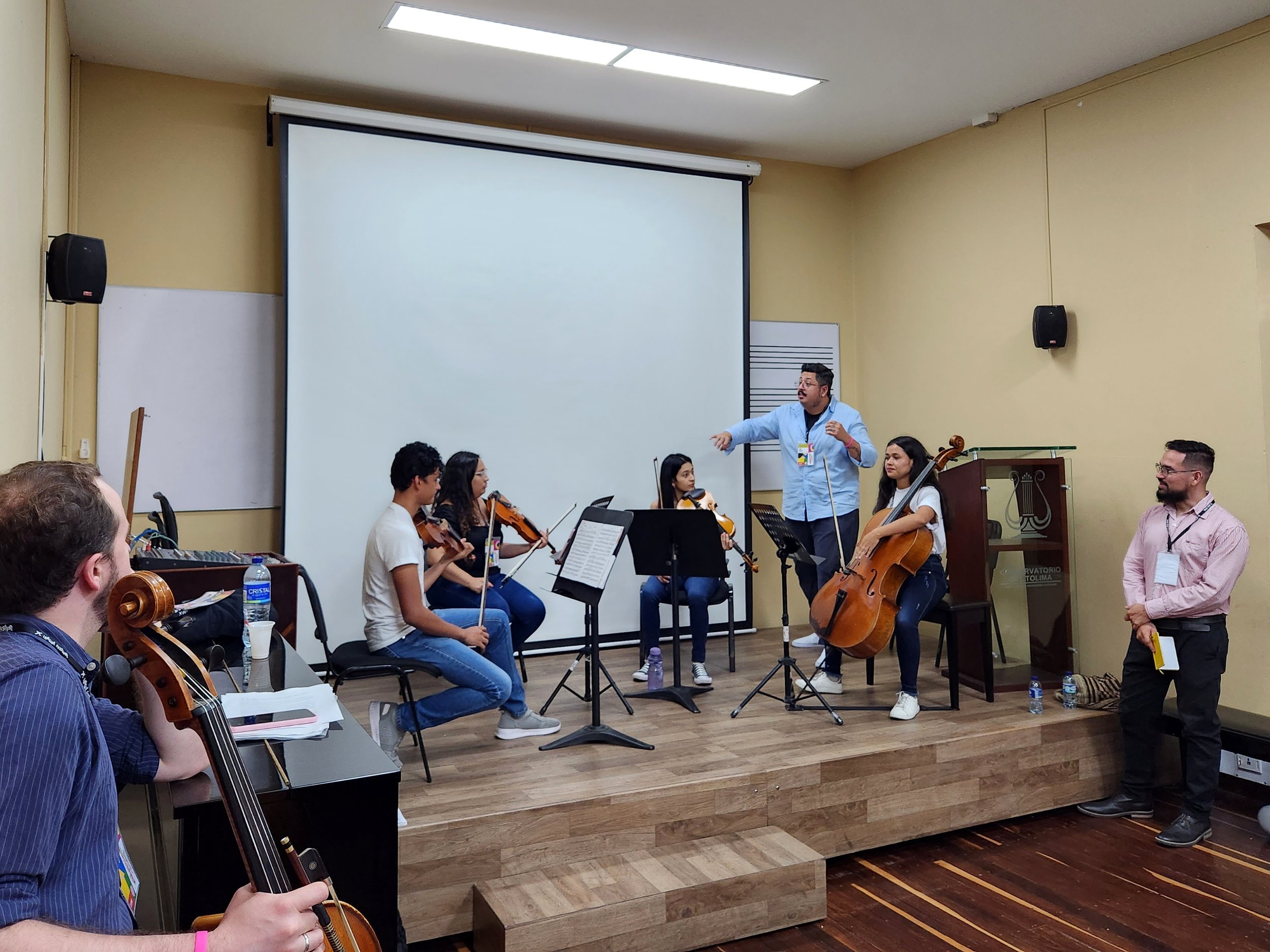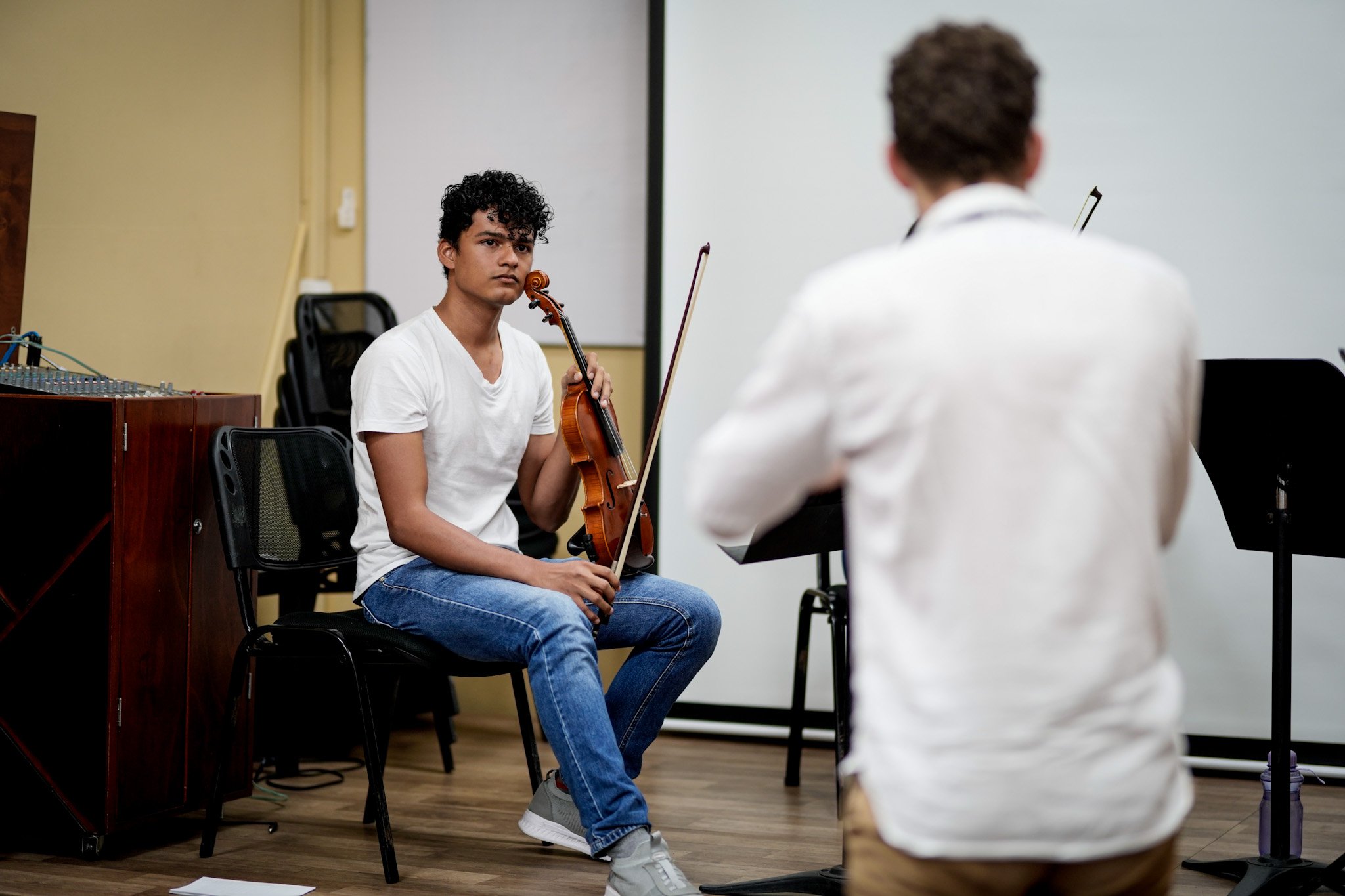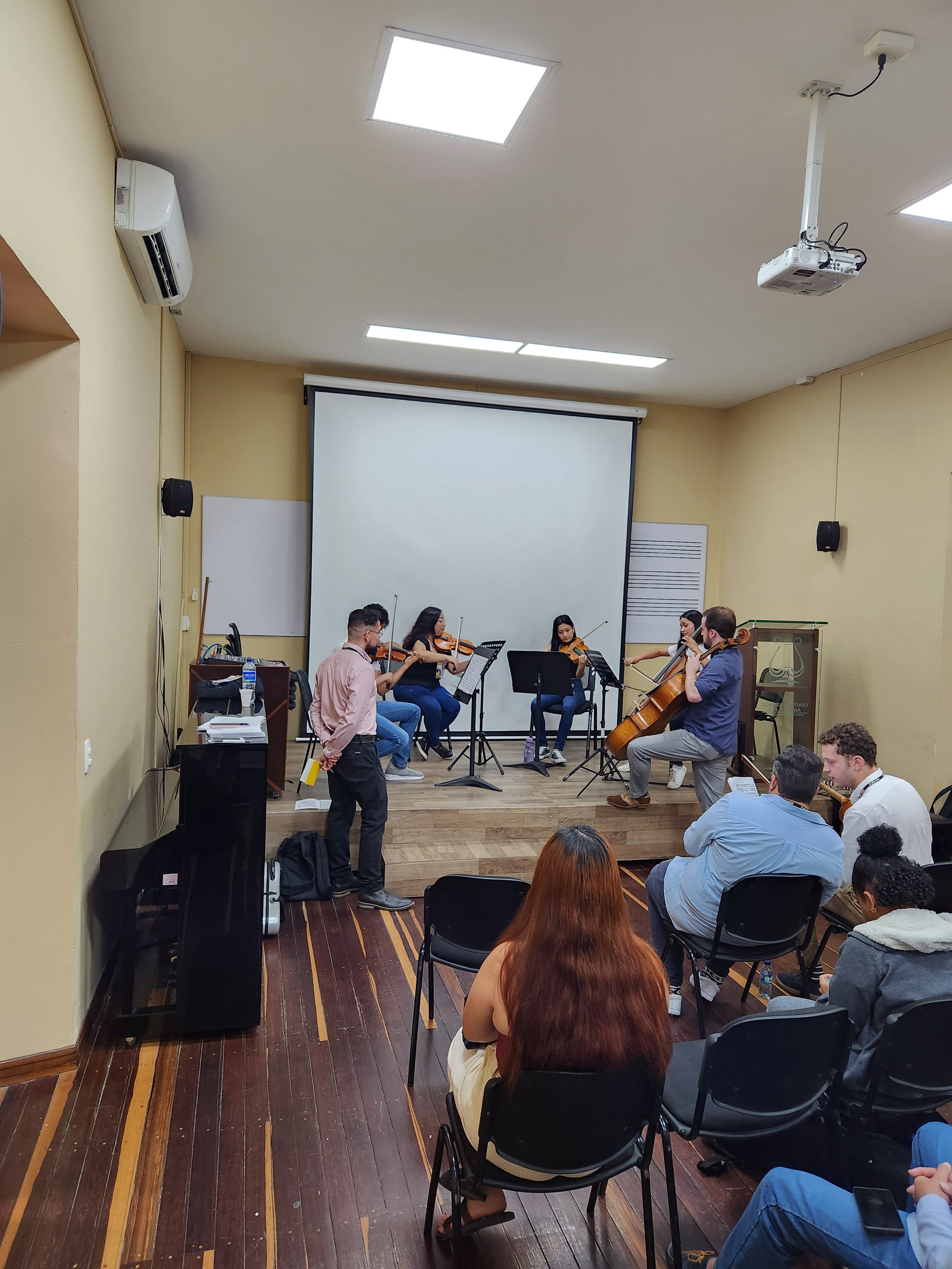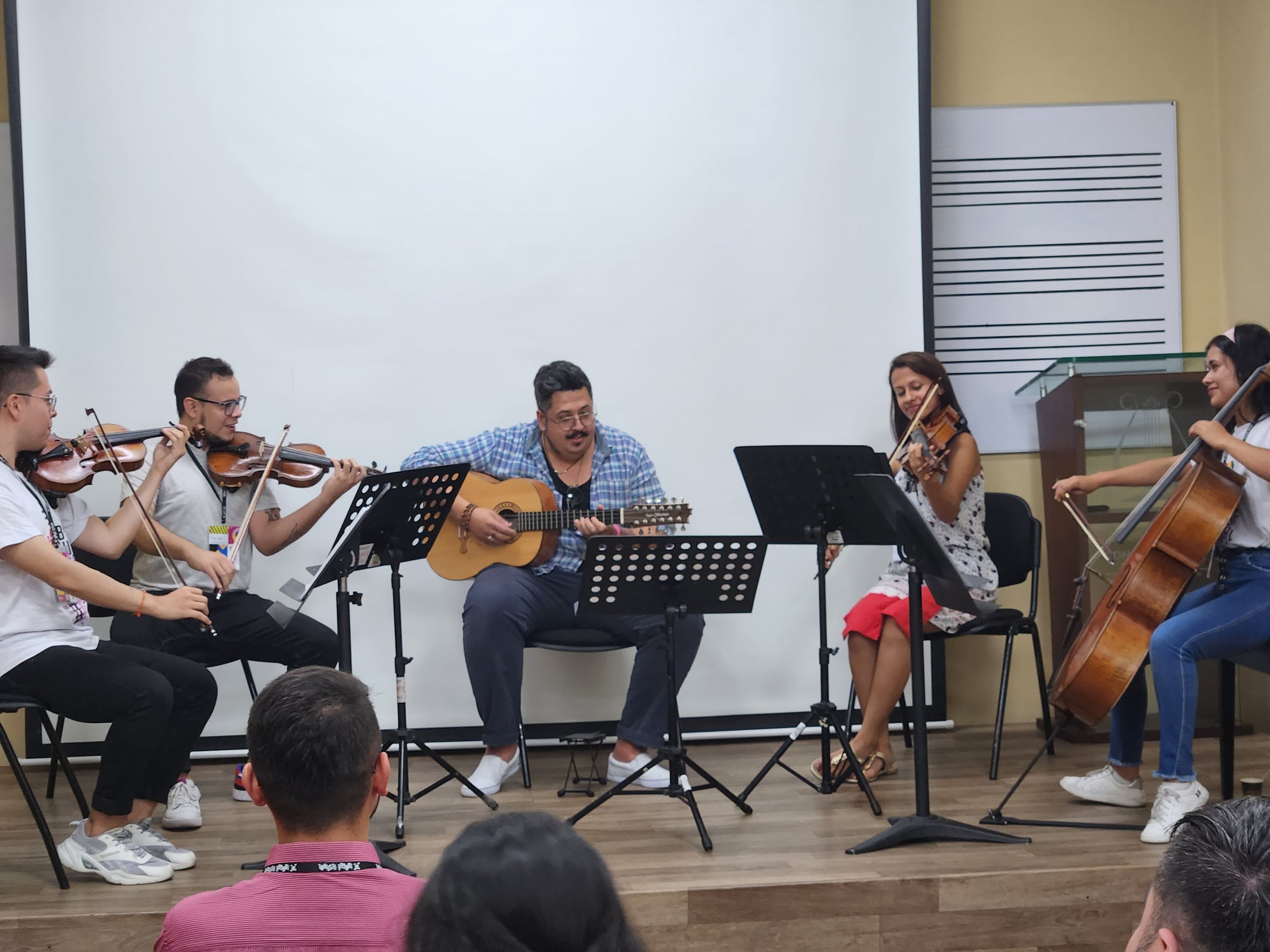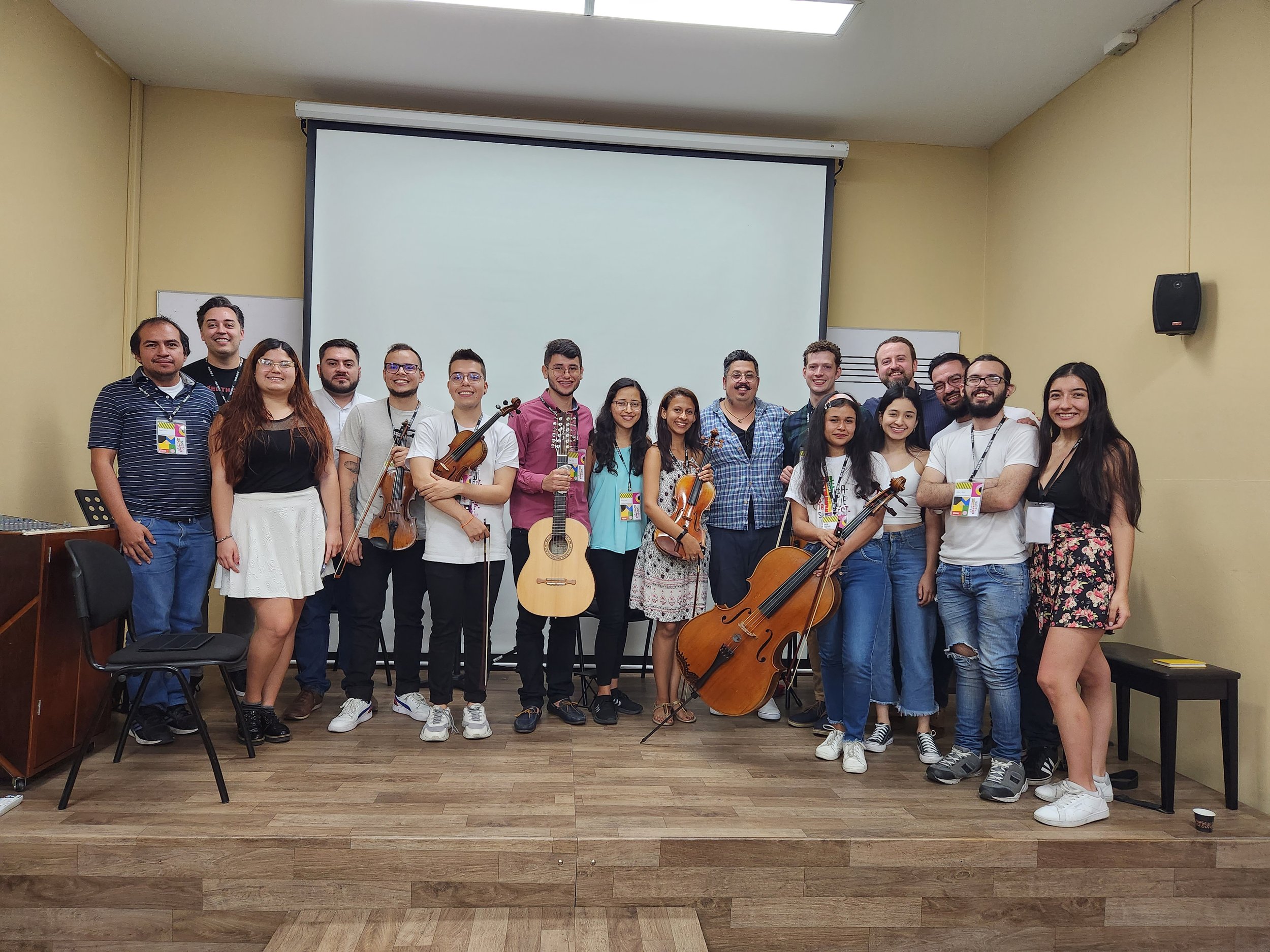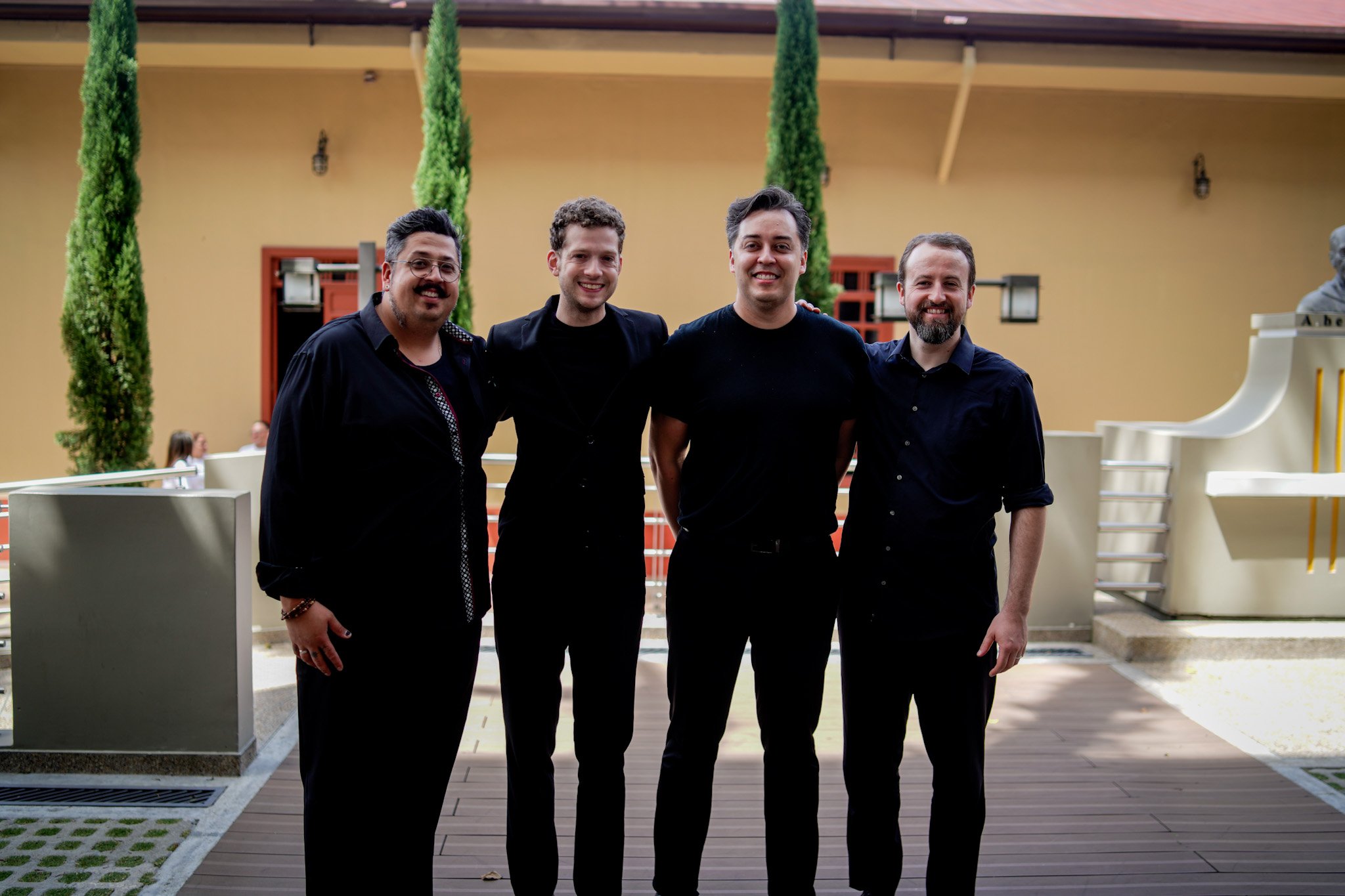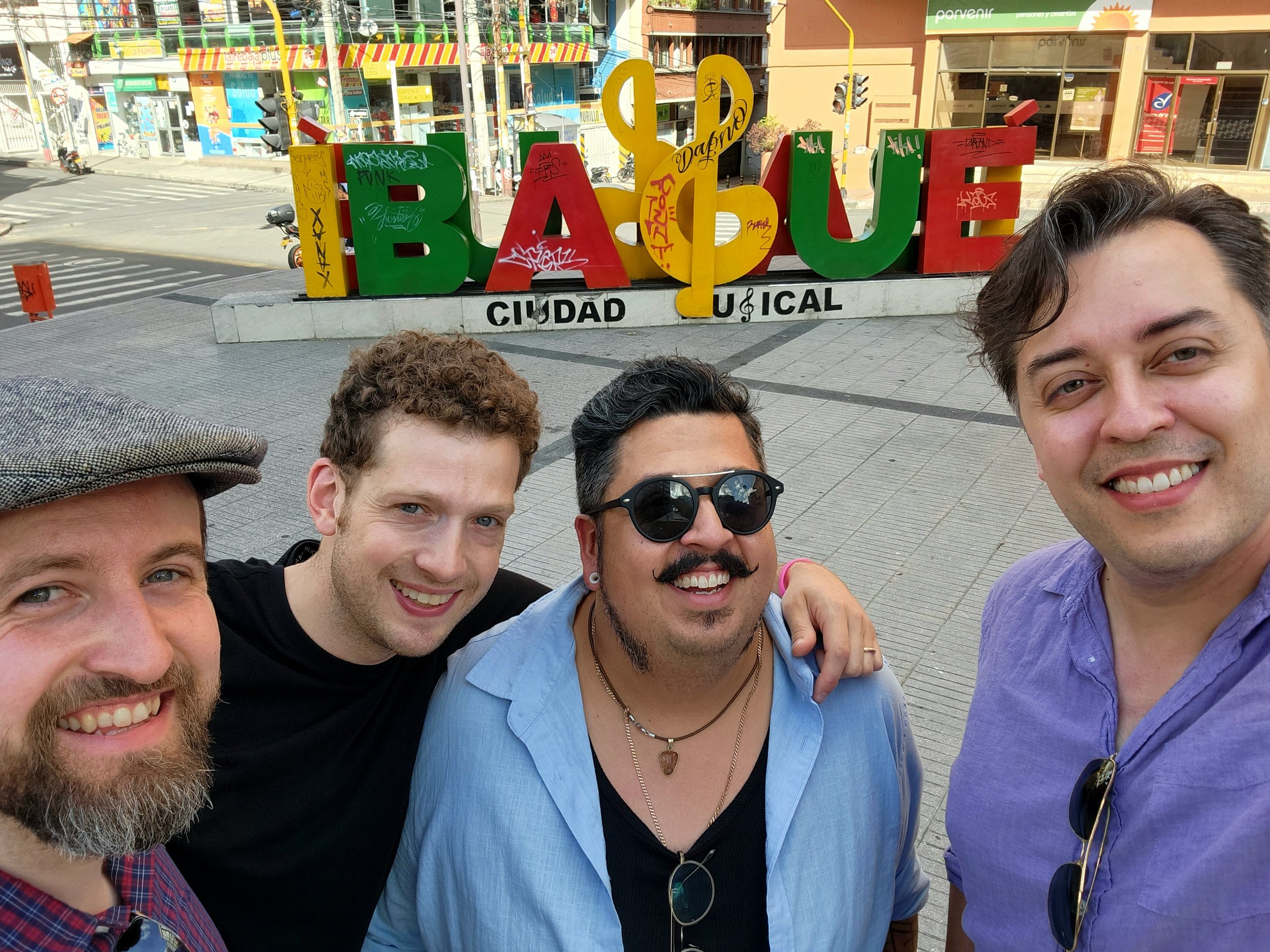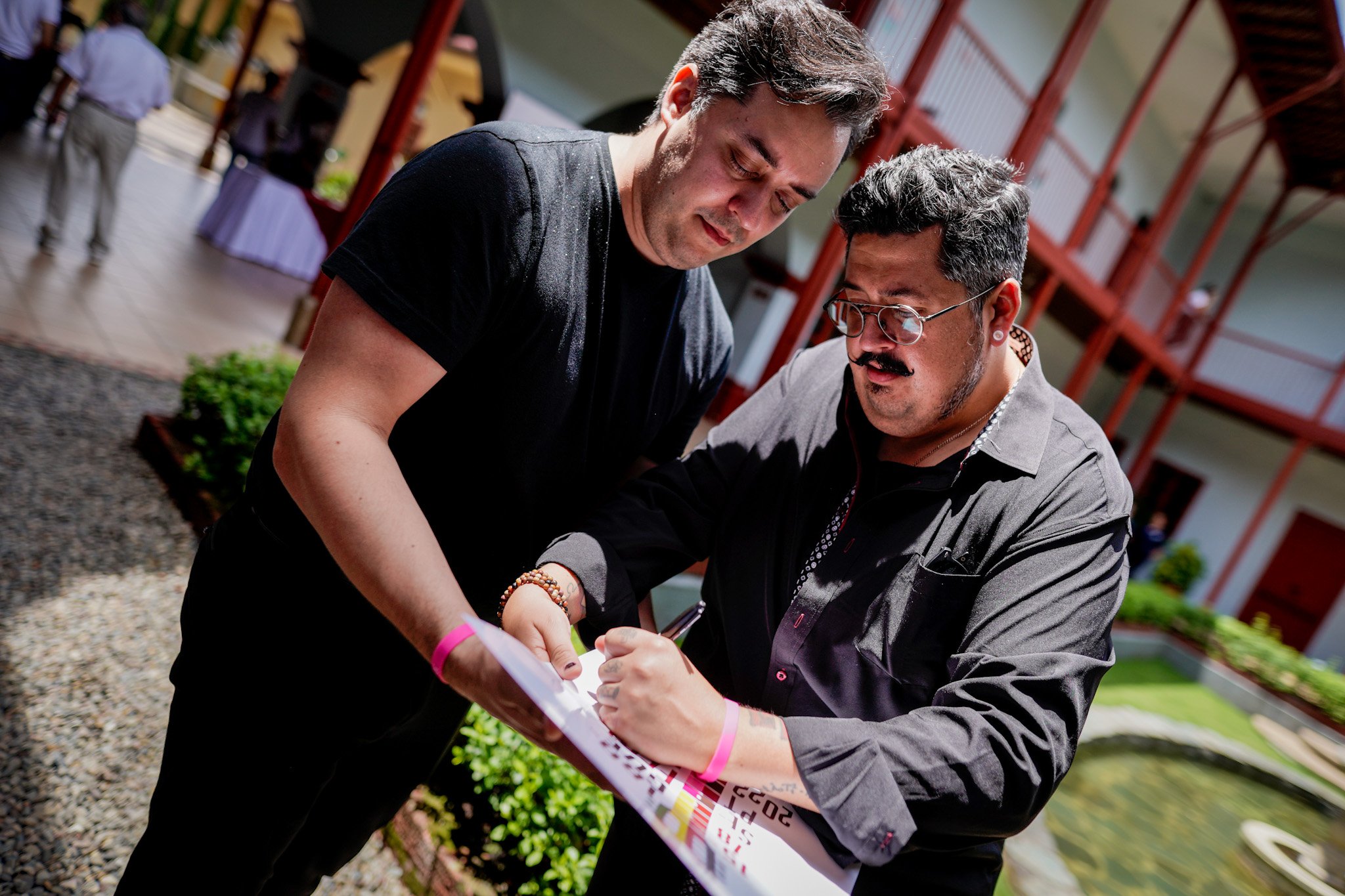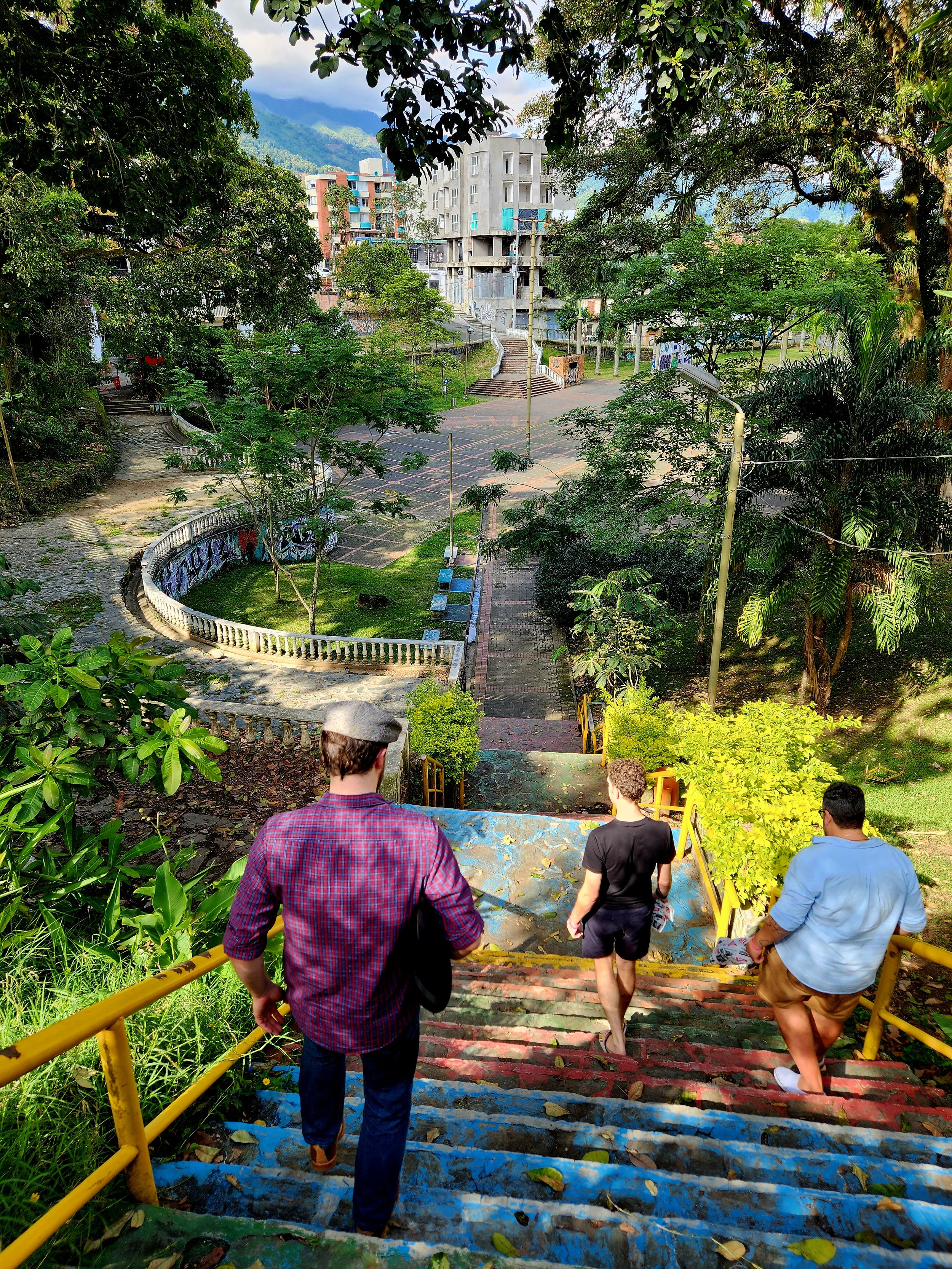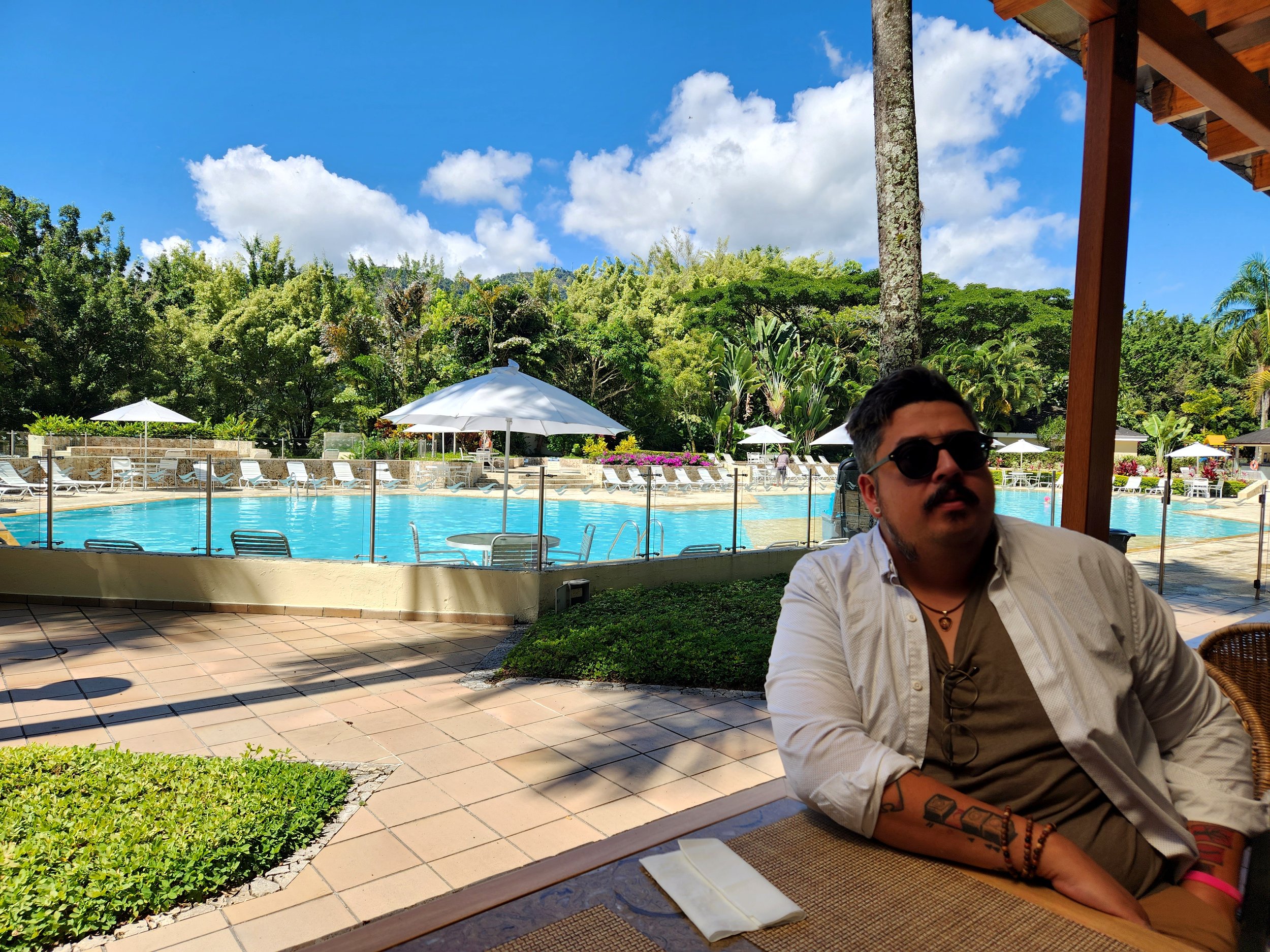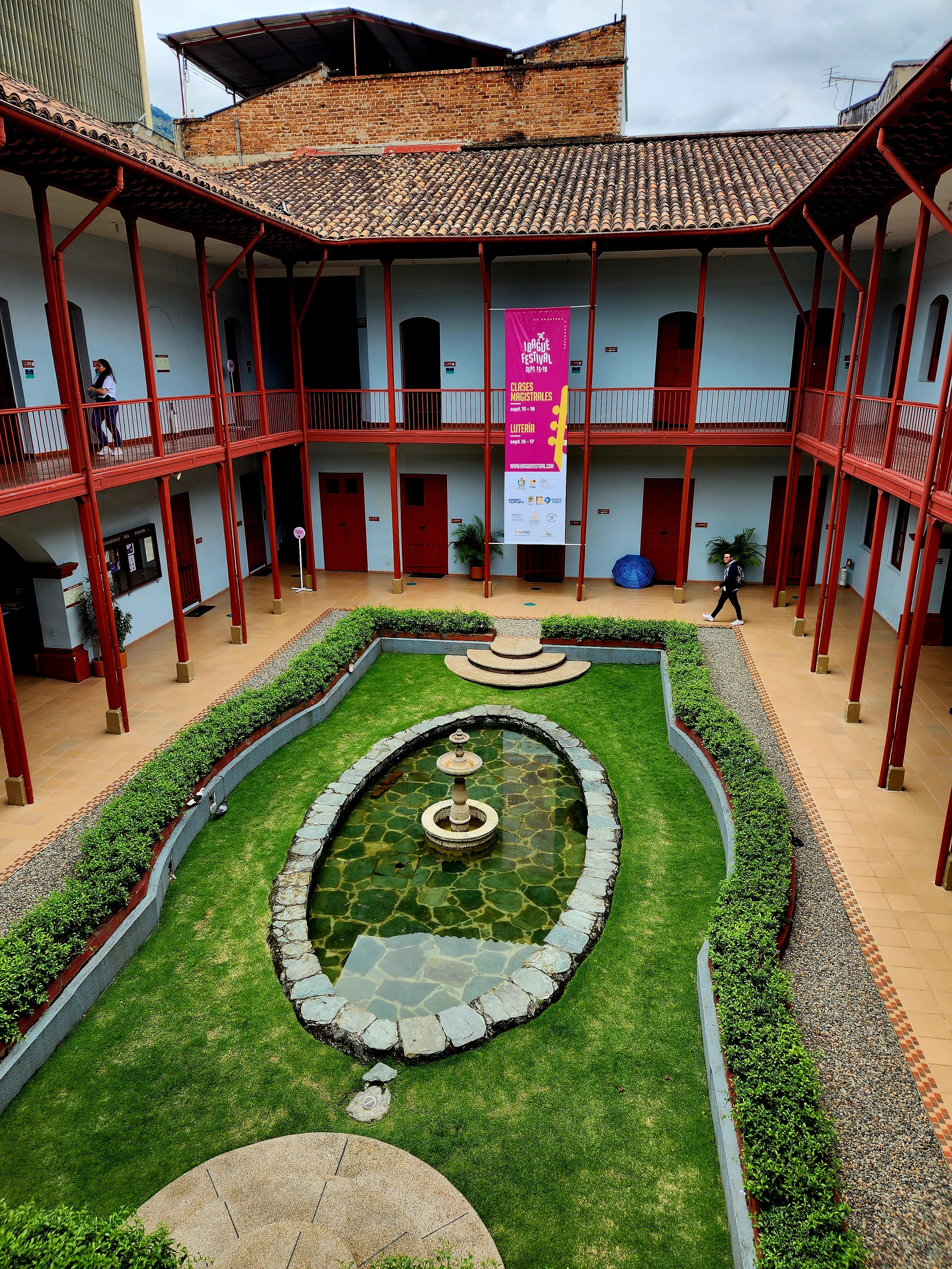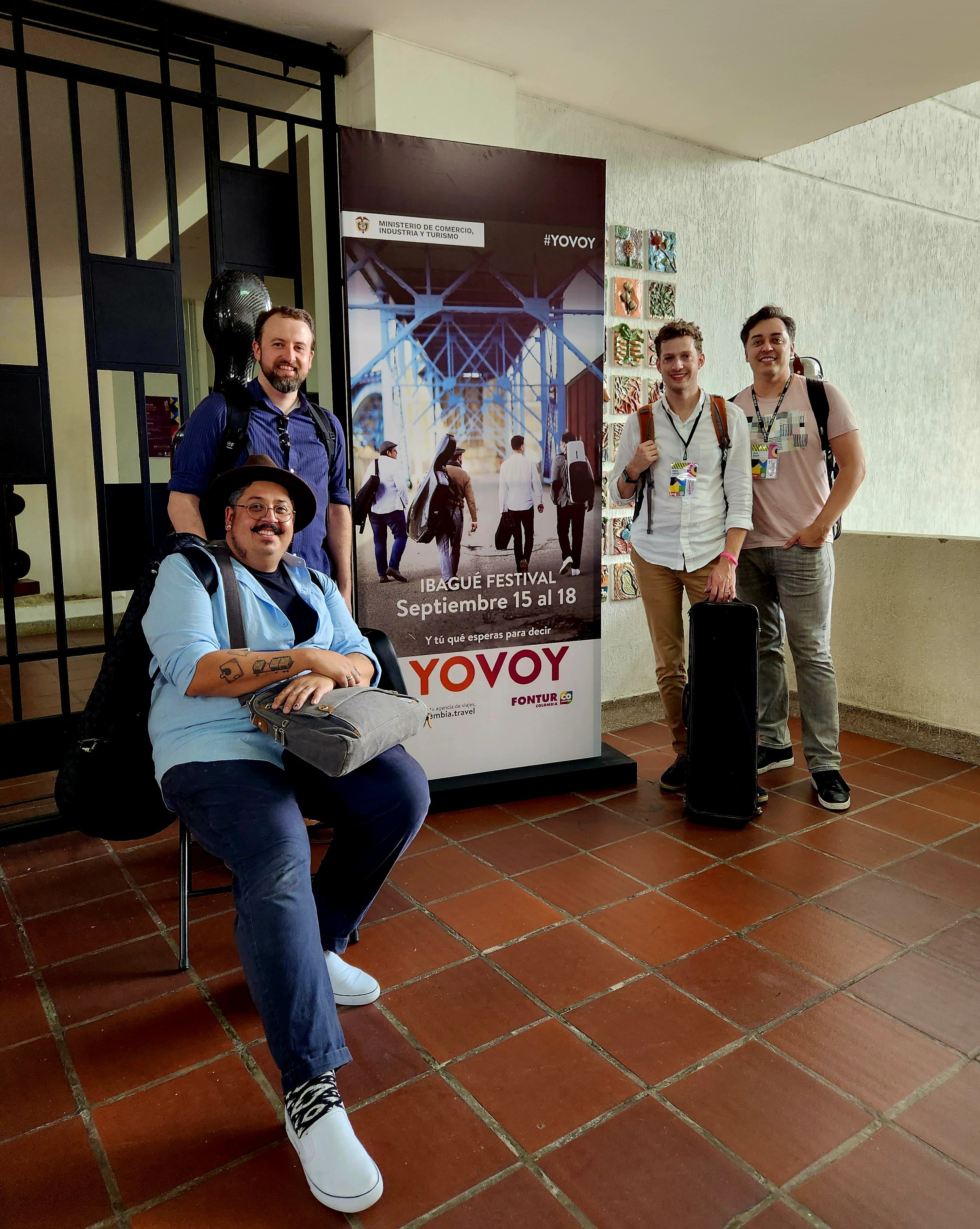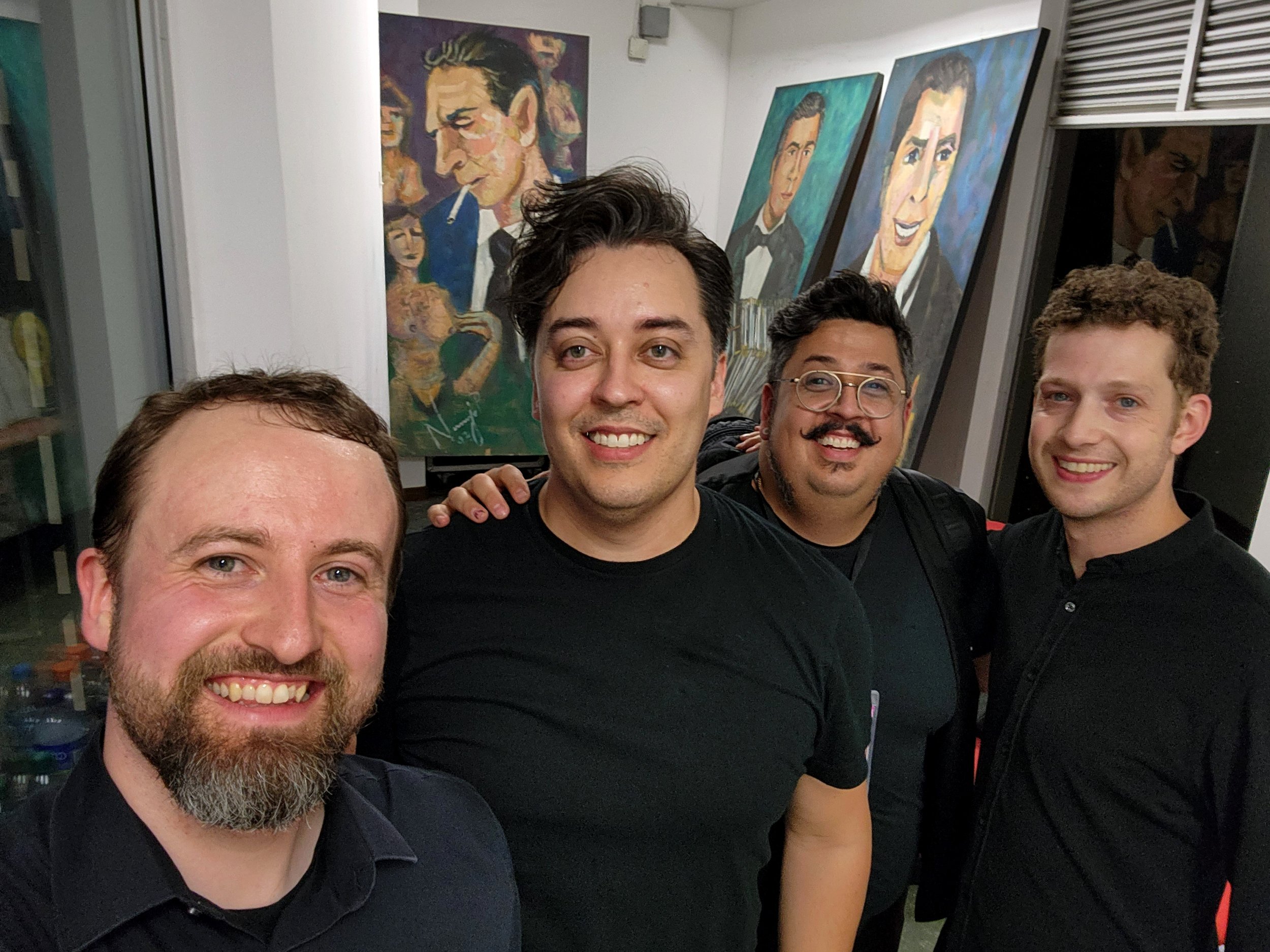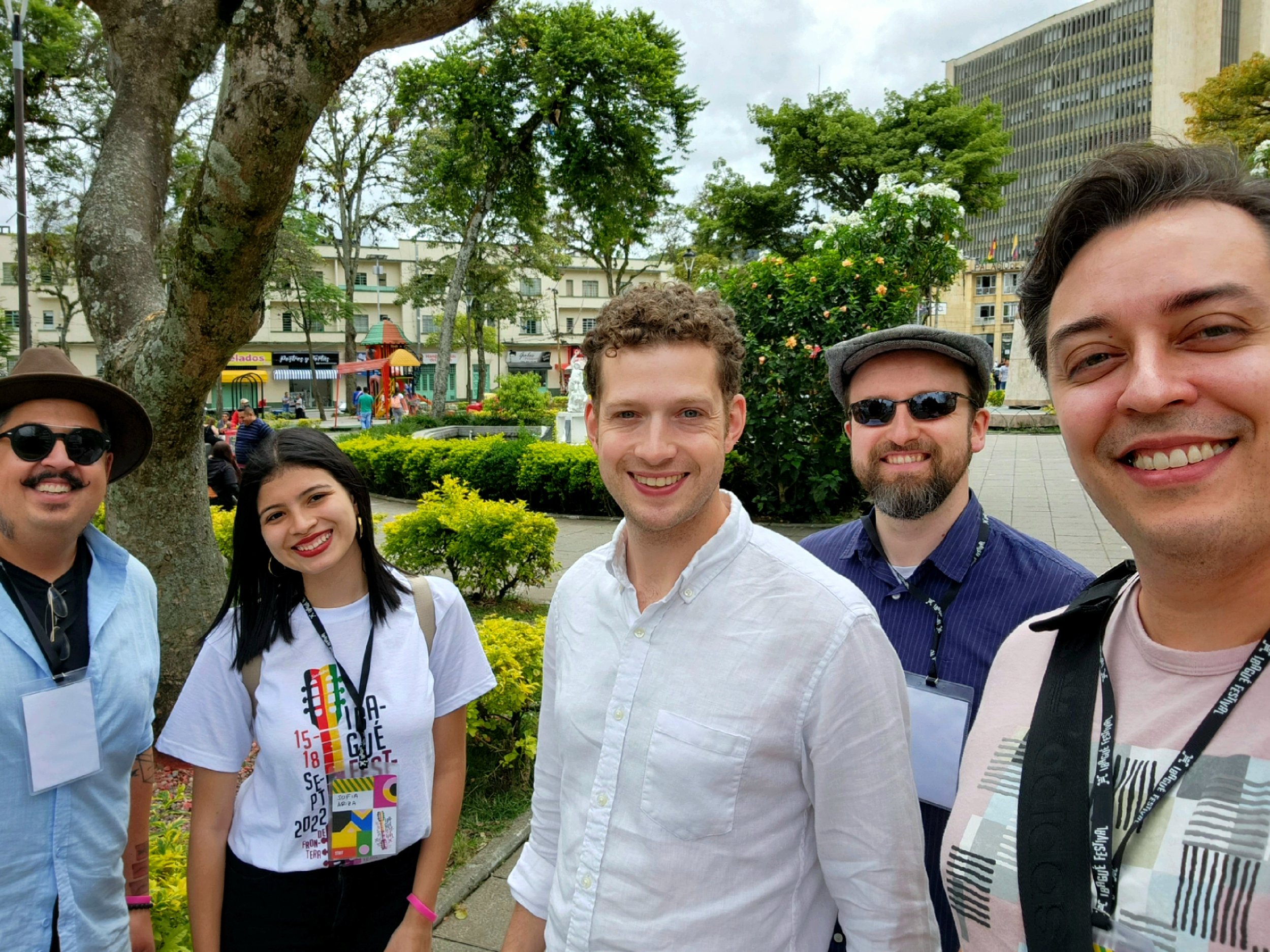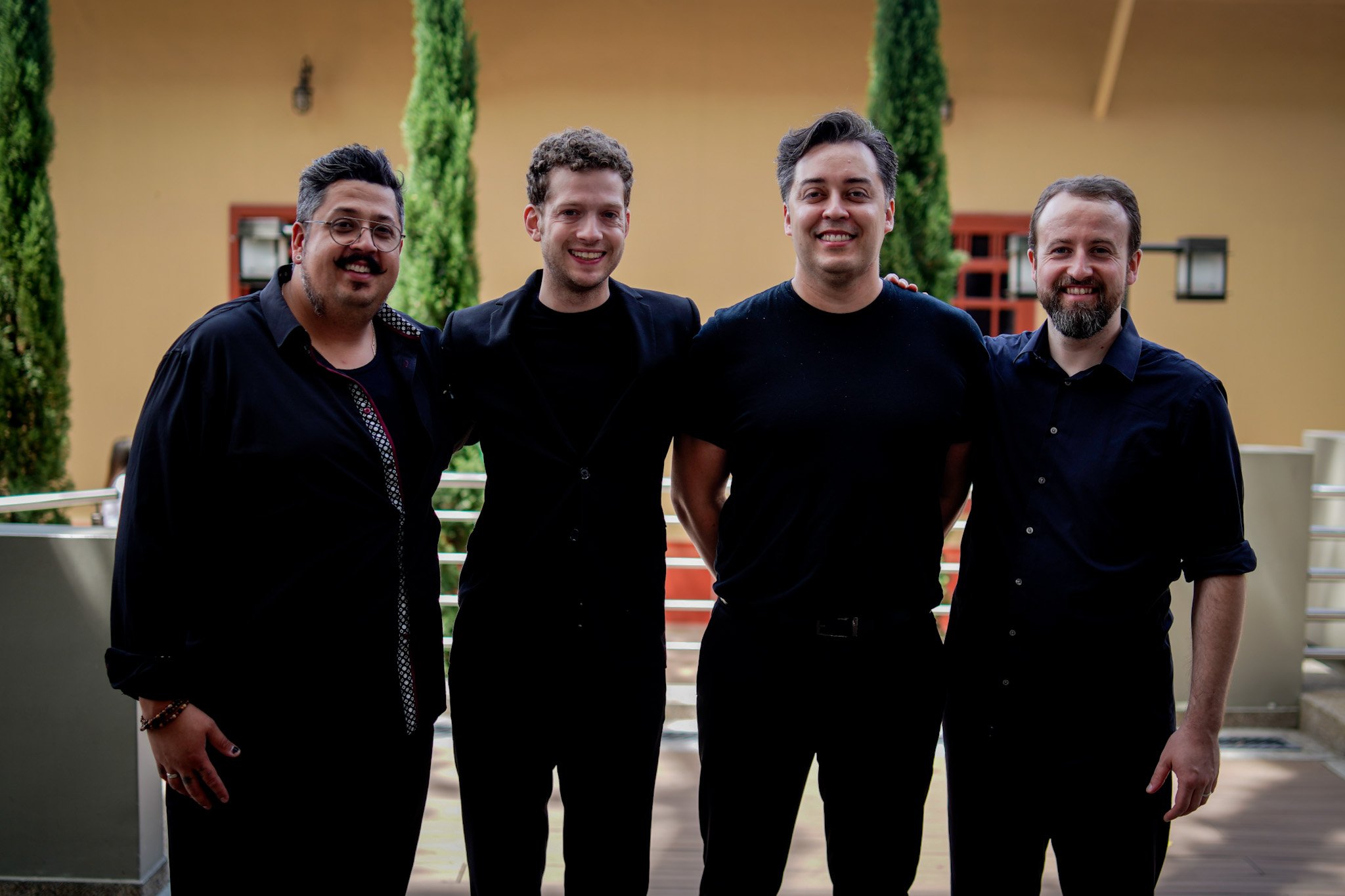One of the unique and special things about being part of a professional string quartet is the intimacy between the quartet members’ families. Getting to spend two weeks at Lakeside Chautauqua in Ohio gave all of our families a chance to visit. It was fun to have the kids, wives, and grandparents around while we rehearsed and performed because with all of our busy schedules, it’s often difficult for our families to find time to spend with one another. We also all enjoyed hearing our kids’ enthusiasm when they came to hear the orchestra rehearsals.
During the first week at Lakeside, both Jason’s and Gio’s families came to visit. As you can see, Gio’s daughter Helen enjoyed hanging out with the Beo guys while we rehearsed.
Gio’s daughter Helen watching Beo rehearse
Helen is a big fan of Jason’s violin playing!
Although we have a busy orchestra and quartet schedule, we make sure to spend time with our families while at Lakeside. One of the most peaceful hangout spots is on the pier at Lakeside, and, as you can see, our kids love it there as well. 🌊
Jason and his daughter Luna walking together on the pier
Jason's wife Jingyi and their daughter Luna and son Felix (in the stroller) relaxing with Sean on the pier
During the second week at Lakeside, Sean and Ryan’s family came to visit Lakeside. As you can see from the photos below, the kids and families alike had a blast hanging out at the lake and at the beach.
Sean's son Alistair excitedly enters Lake Erie for the first time, along with Sean's dad, Rick Neukom, and Gio
Ryan and his daughter Eleanor enjoying the beach at Lakeside together
Our kids would often come watch the Lakeside Symphony Orchestra (LSO) rehearsals, and would sometimes stay to enjoy running around Lakeside’s Hoover Auditorium.
Jason's wife Jingyi with their son Felix following an LSO rehearsal
Ryan and his daughter Eleanor having a sweet moment during a break from rehearsal
Sean's wife Becky with their son Alistair and Jason's daughter Luna enjoying Hoover Auditorium after an LSO rehearsal
Everyone in Beo and our families had a great time at Lakeside Chautauqua this year, and we’re looking forward to more adventures next summer!

